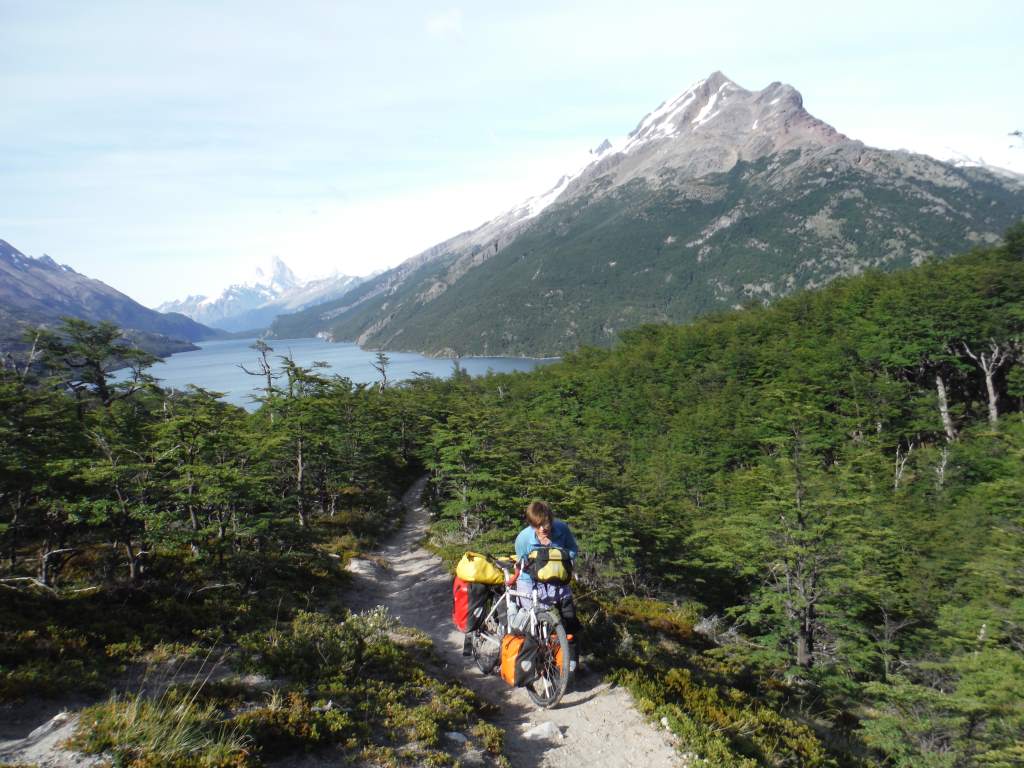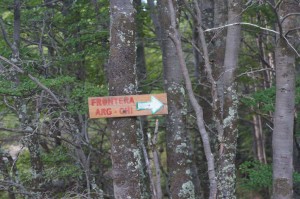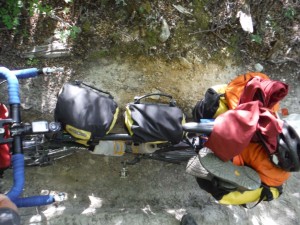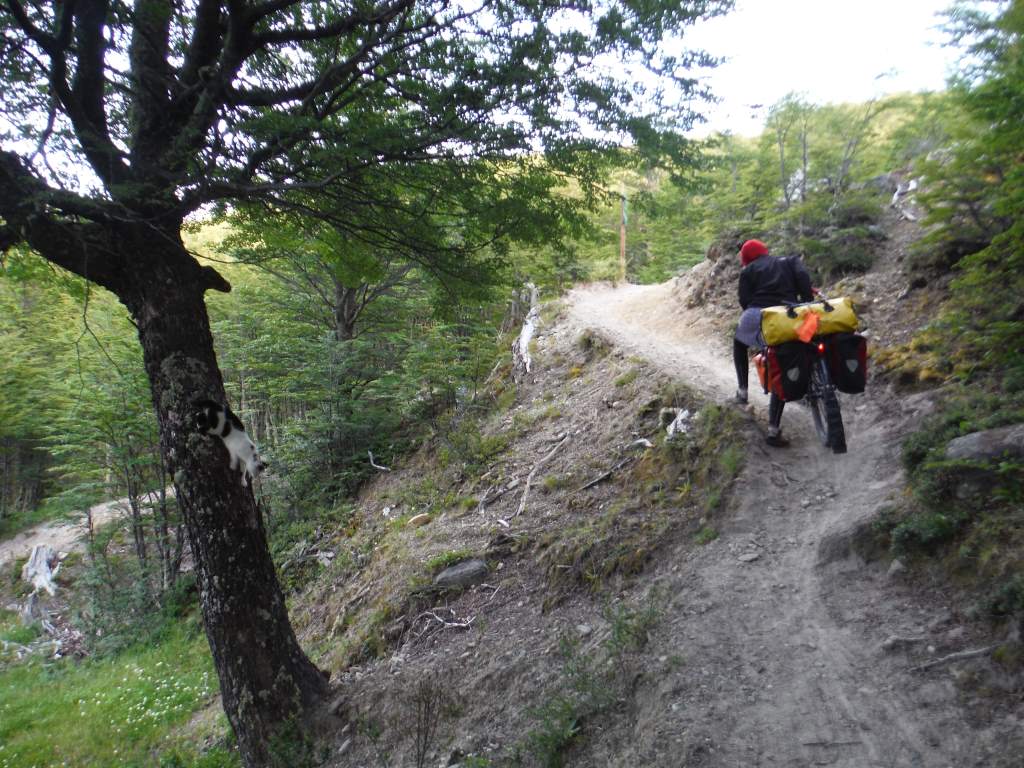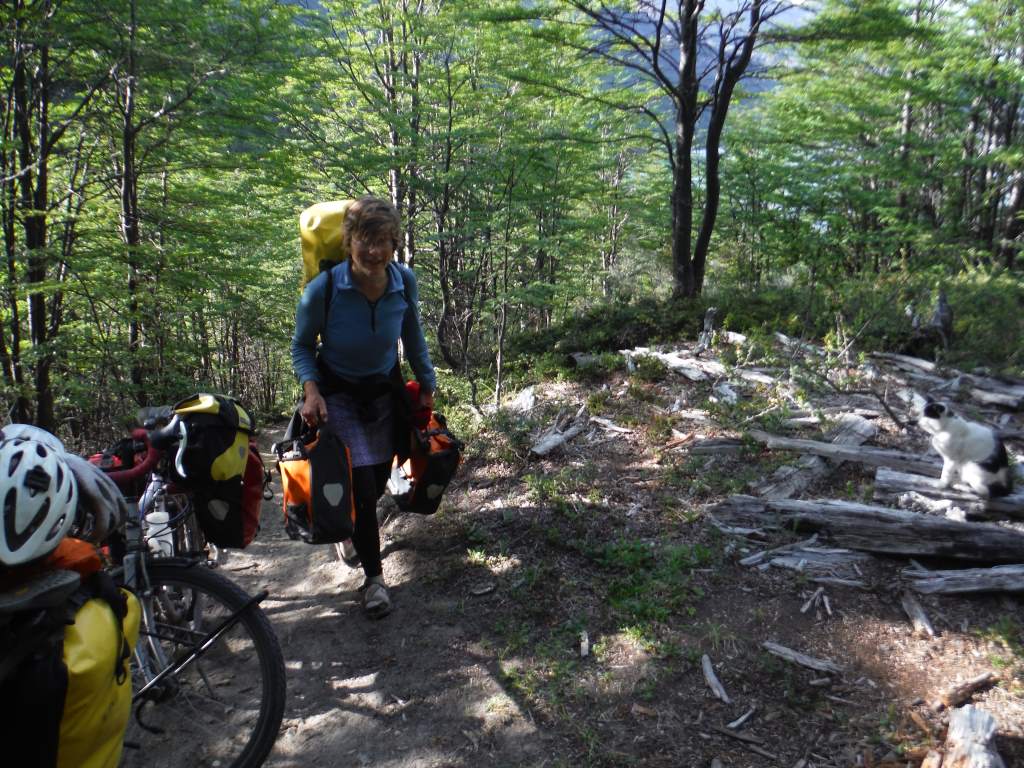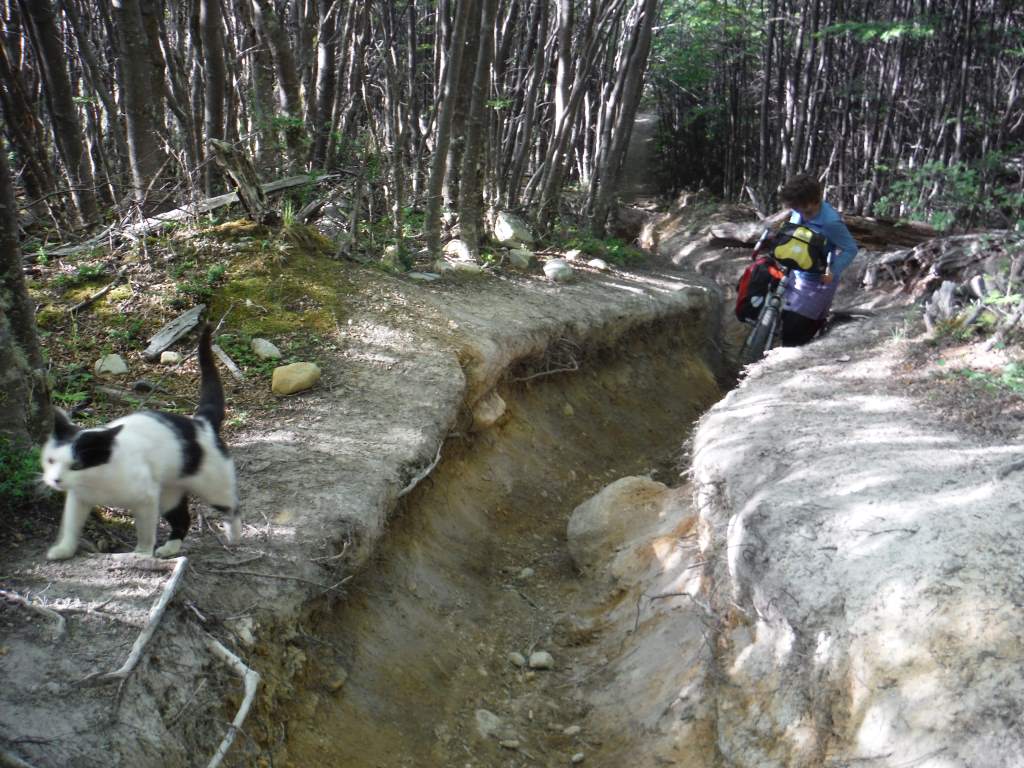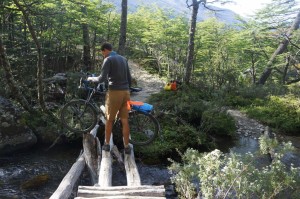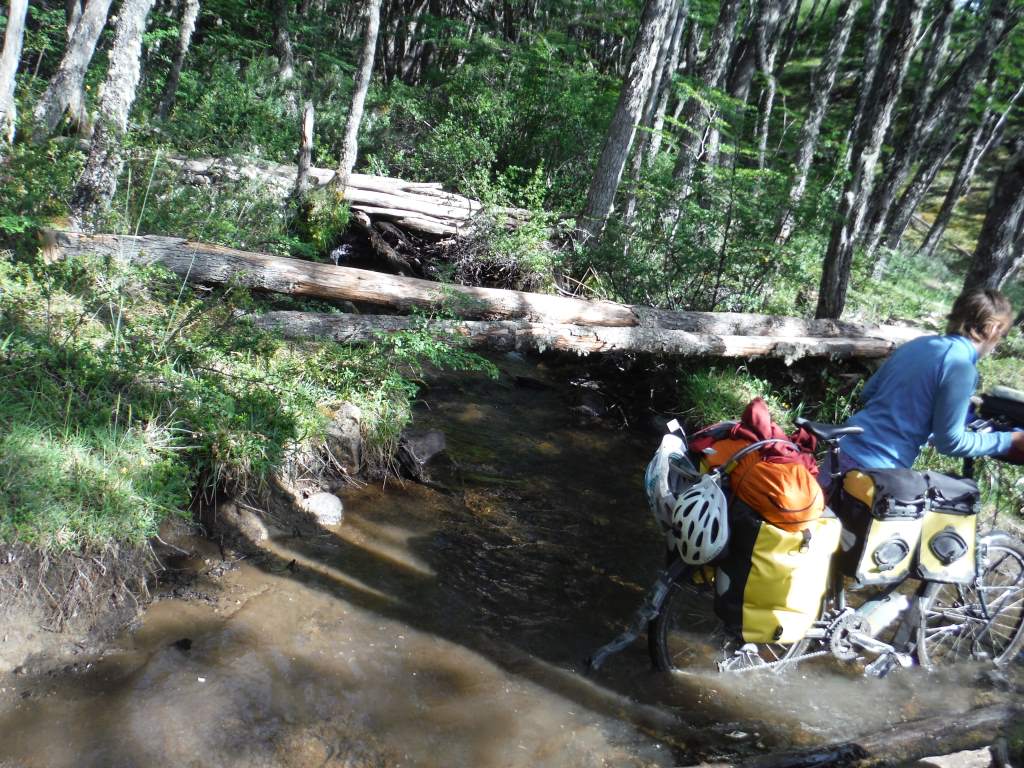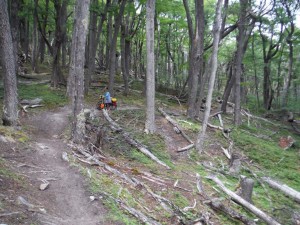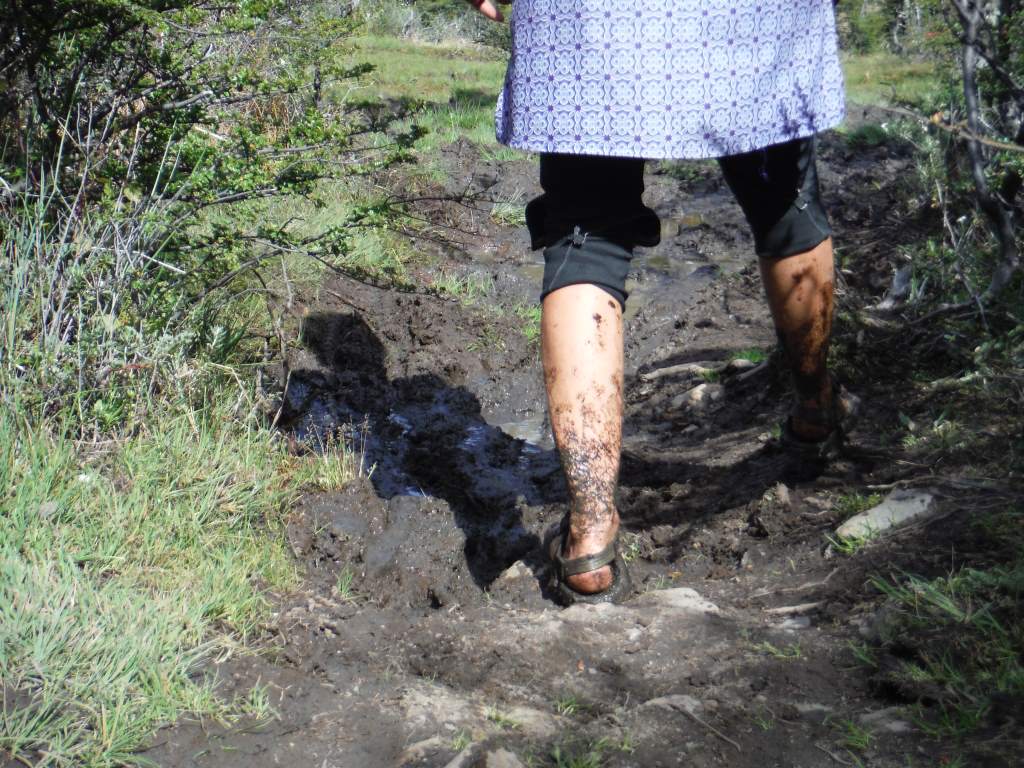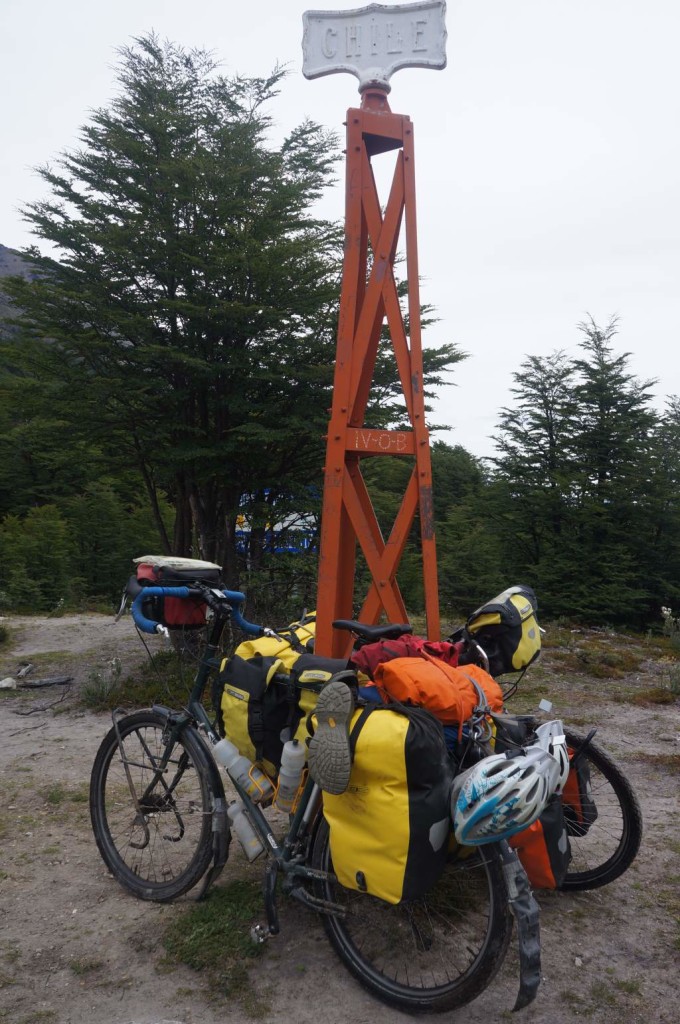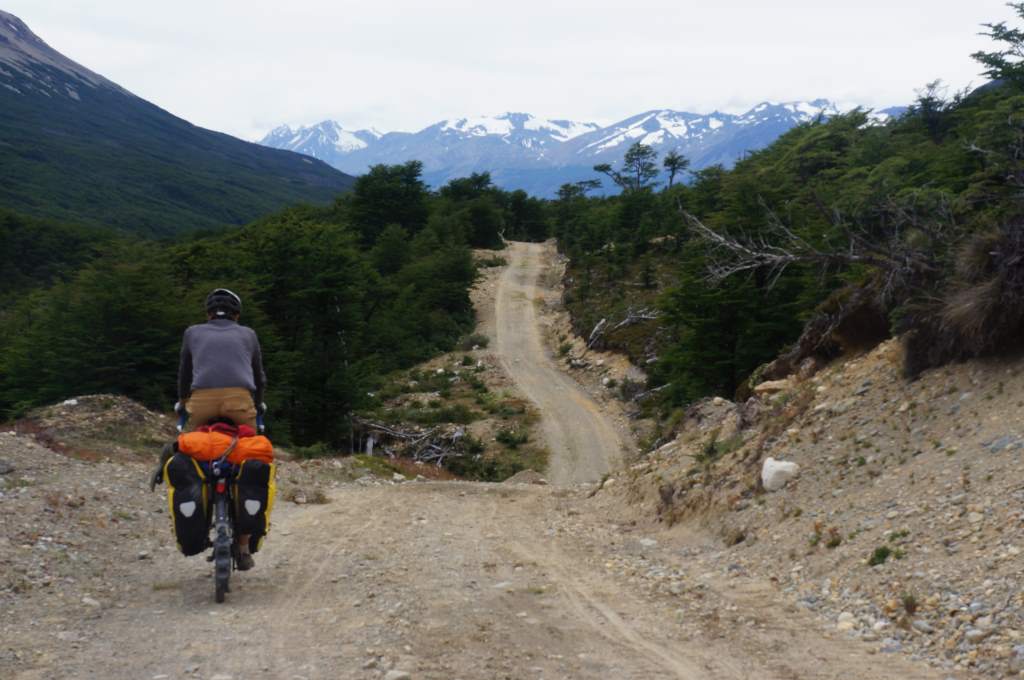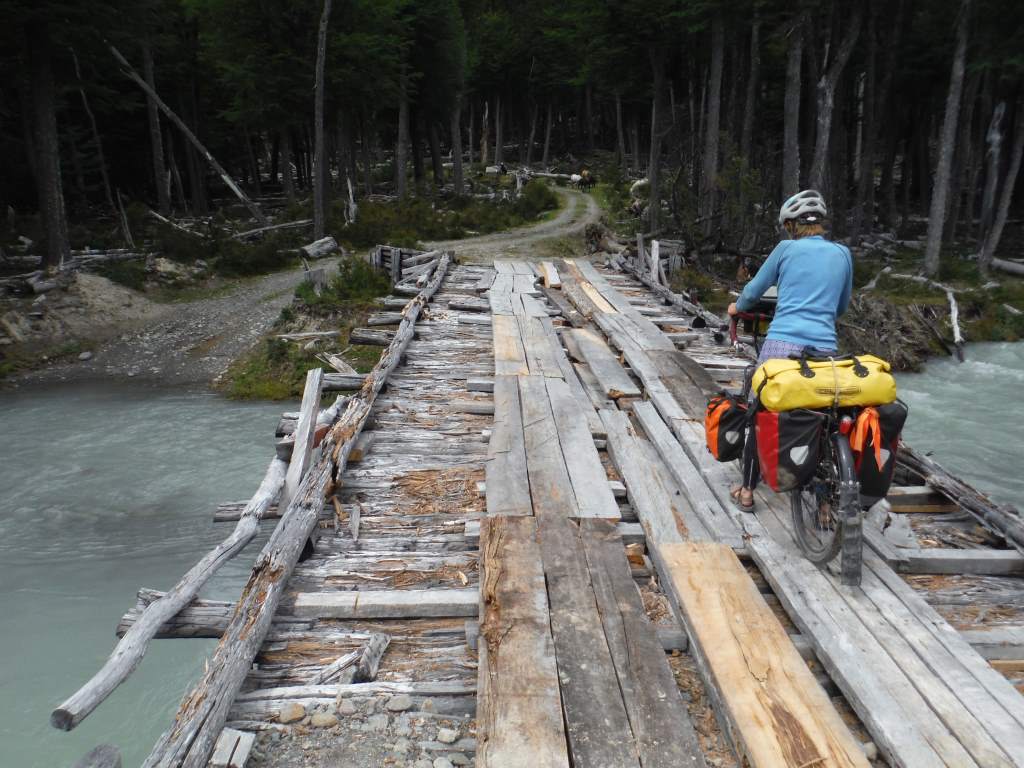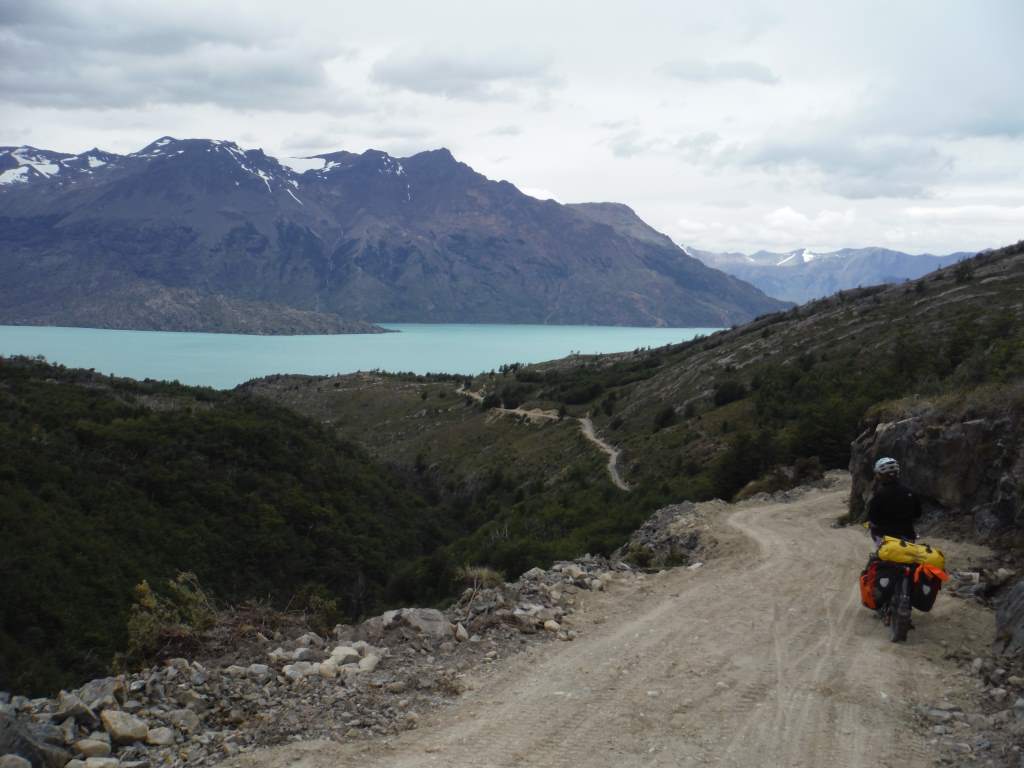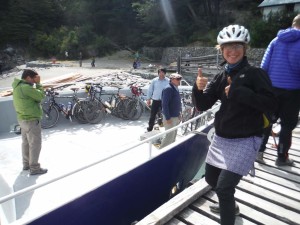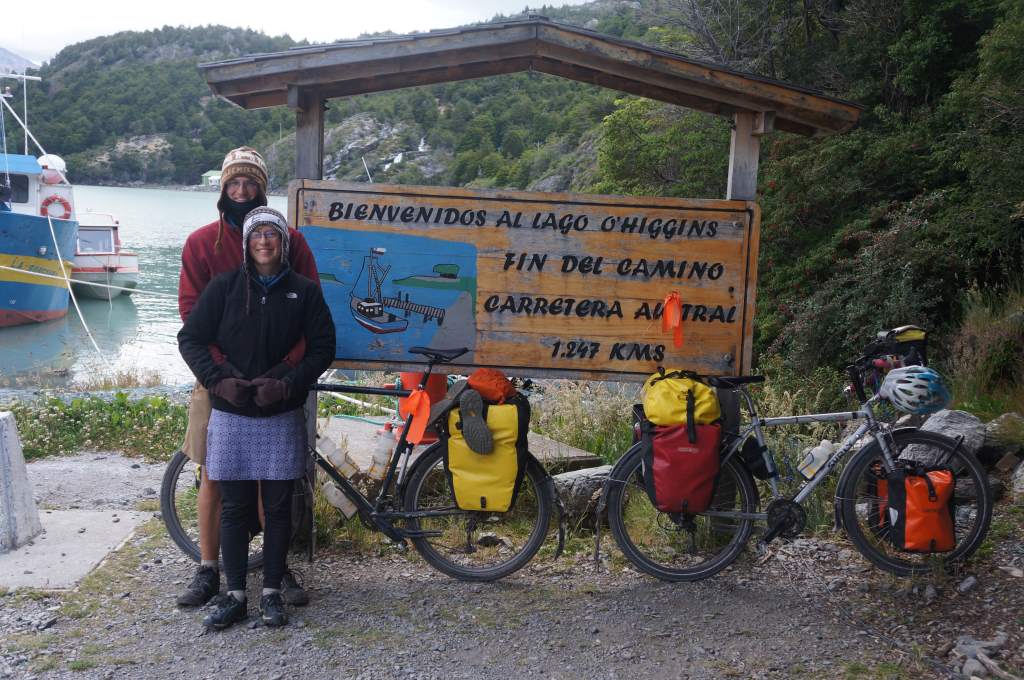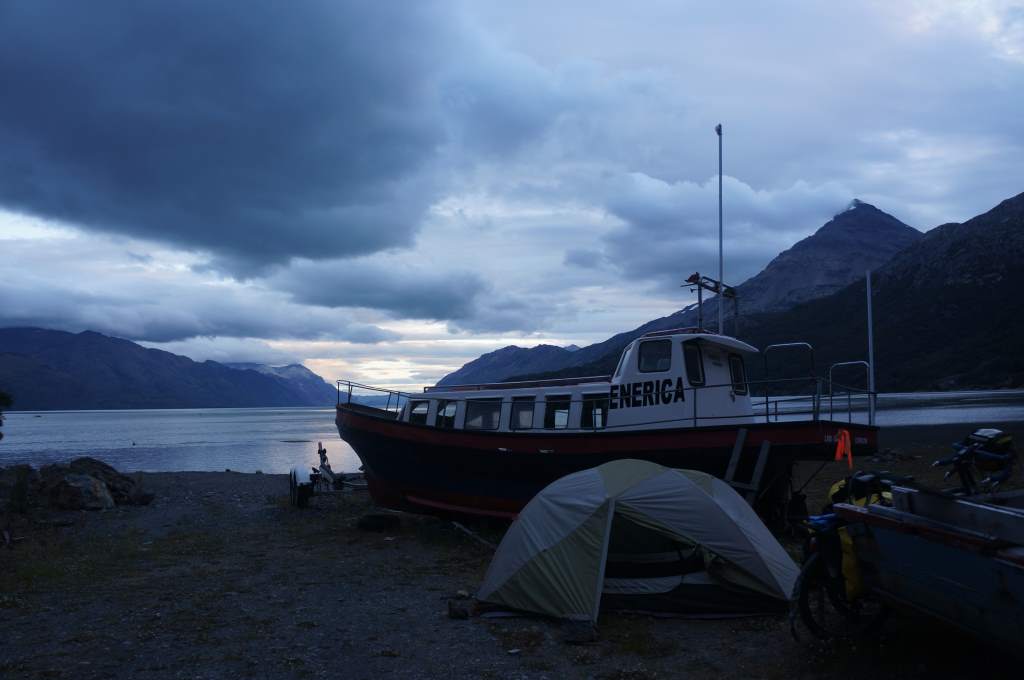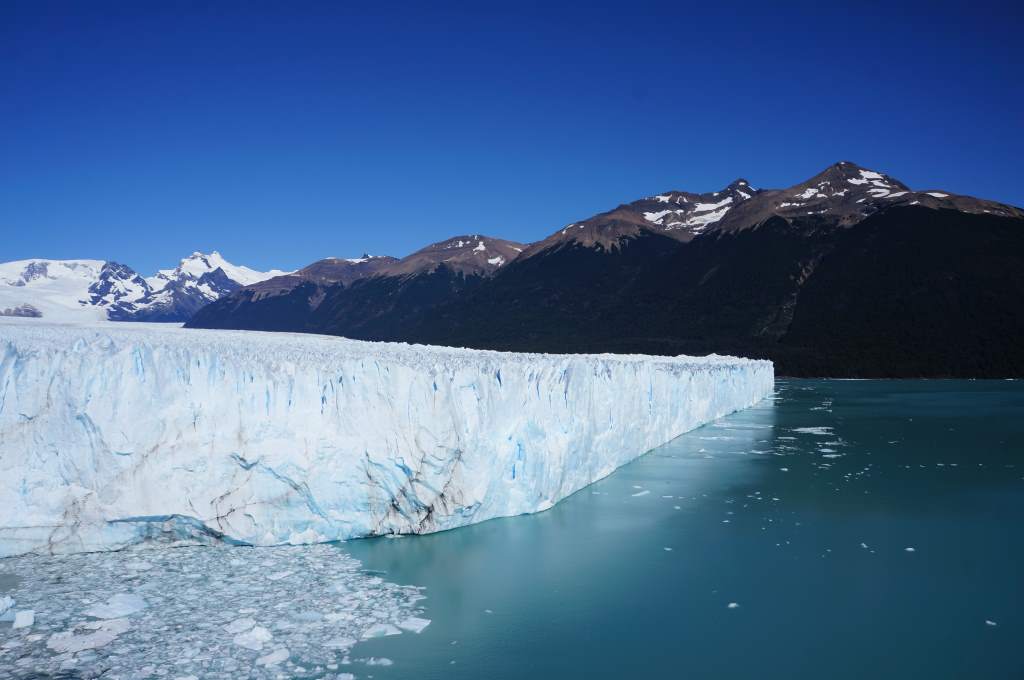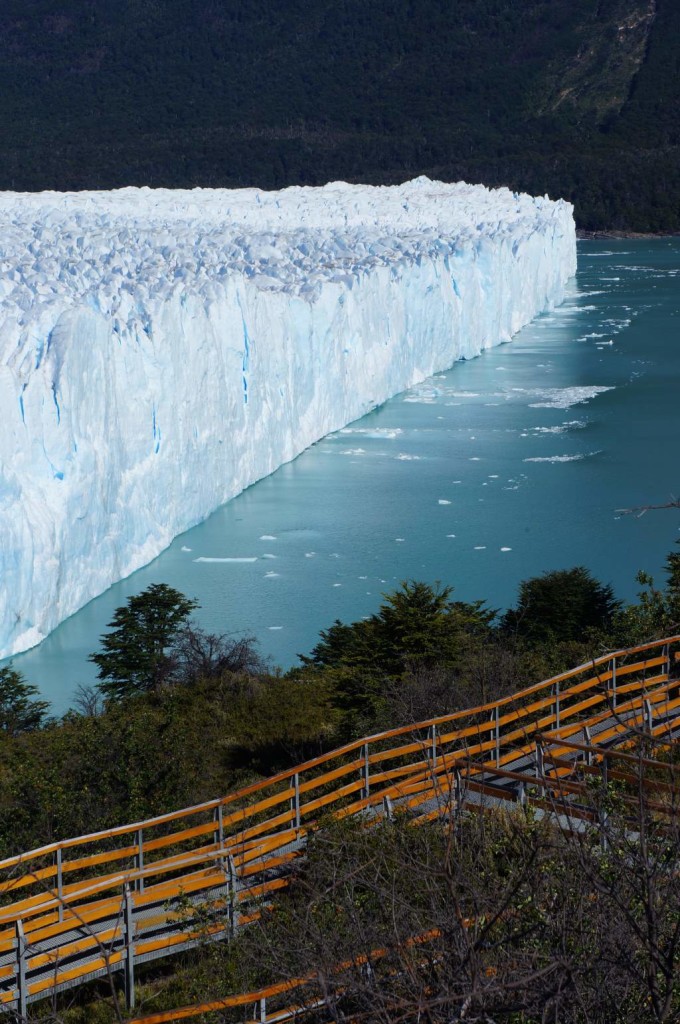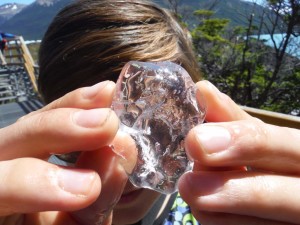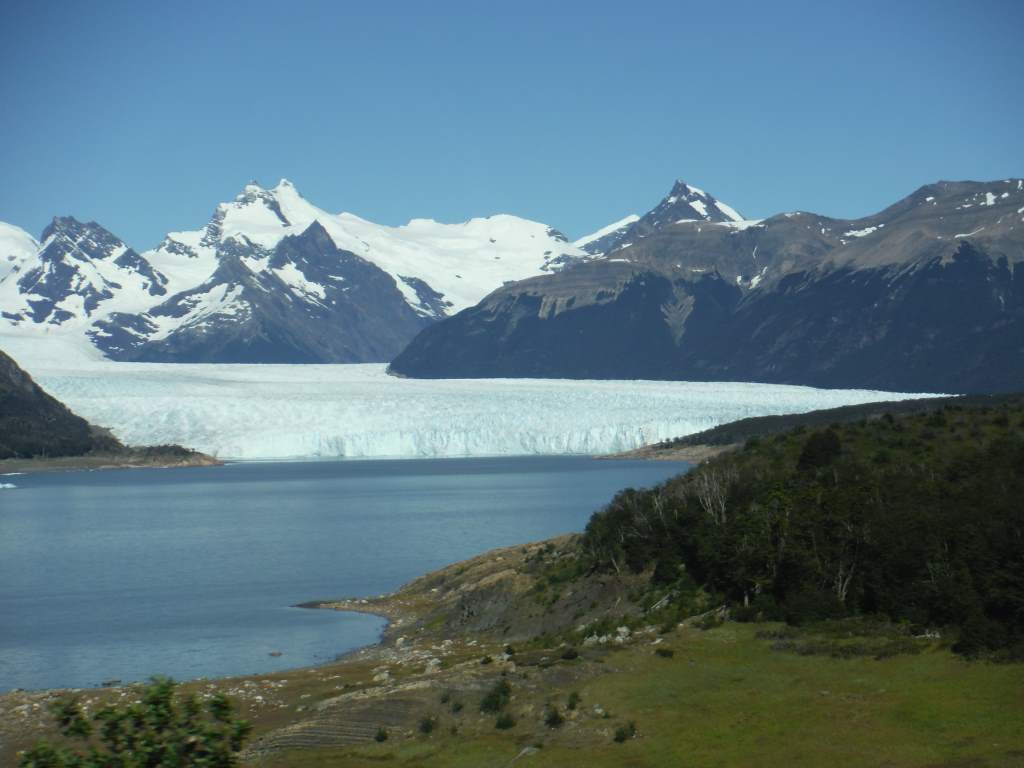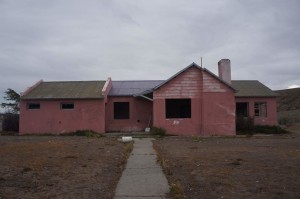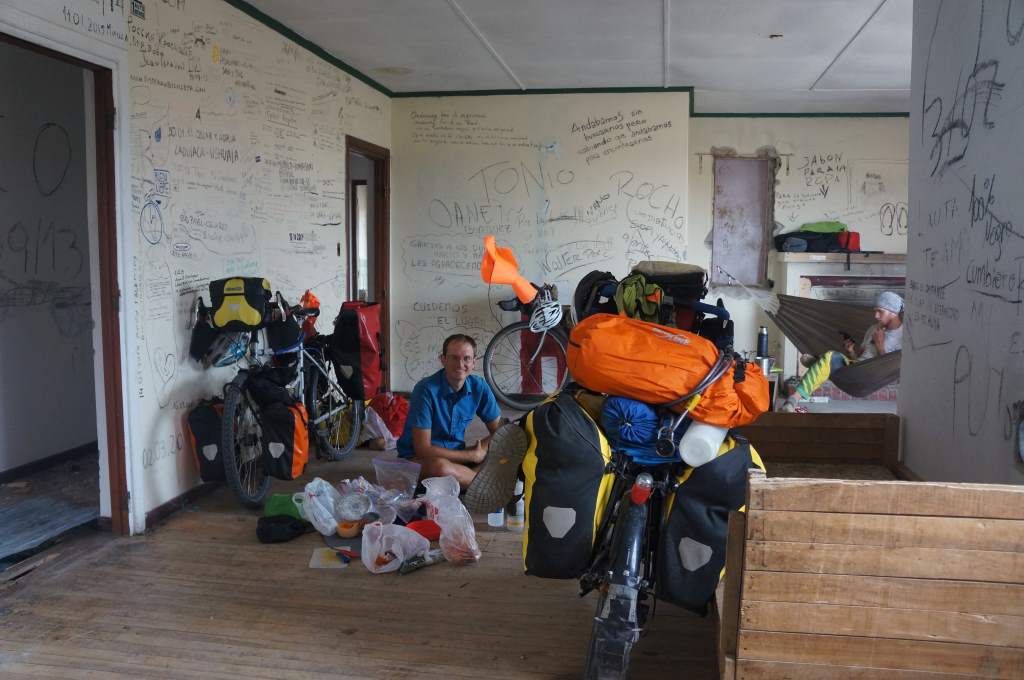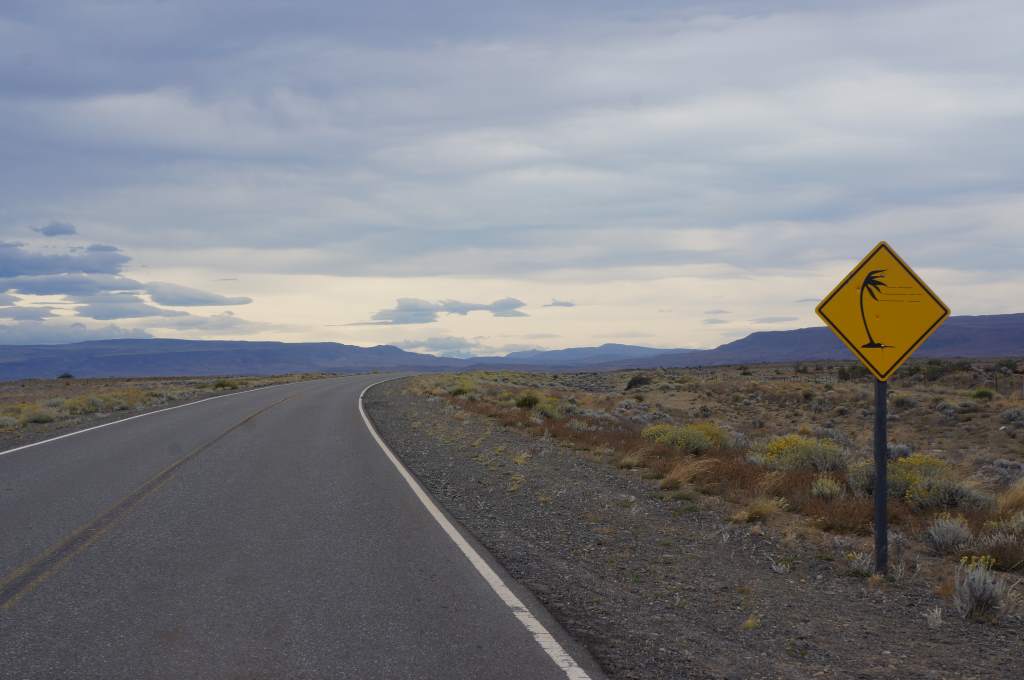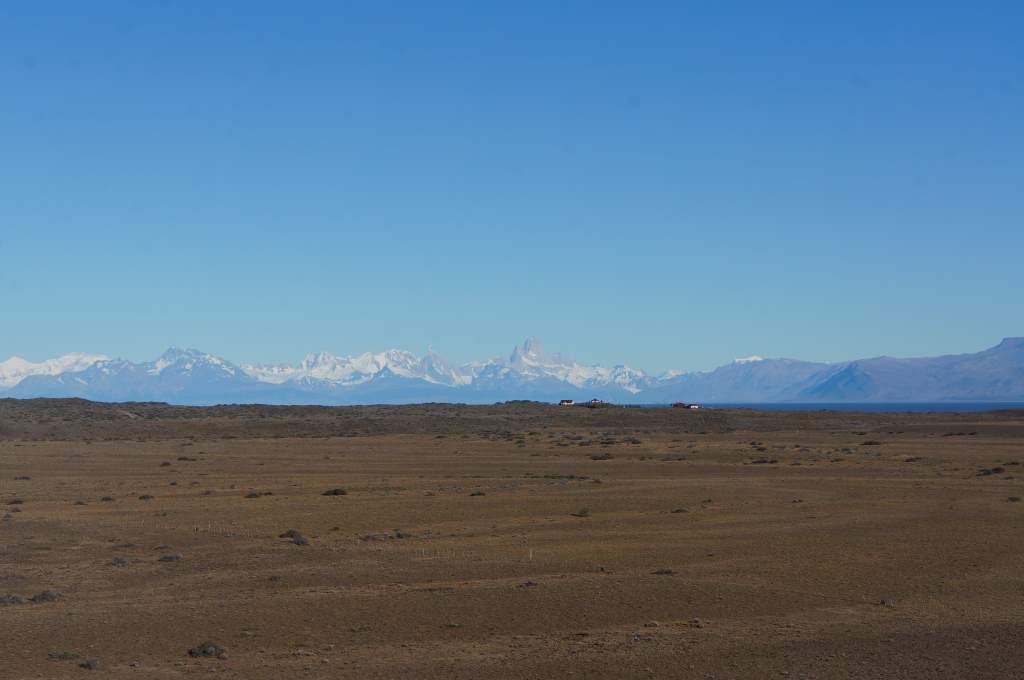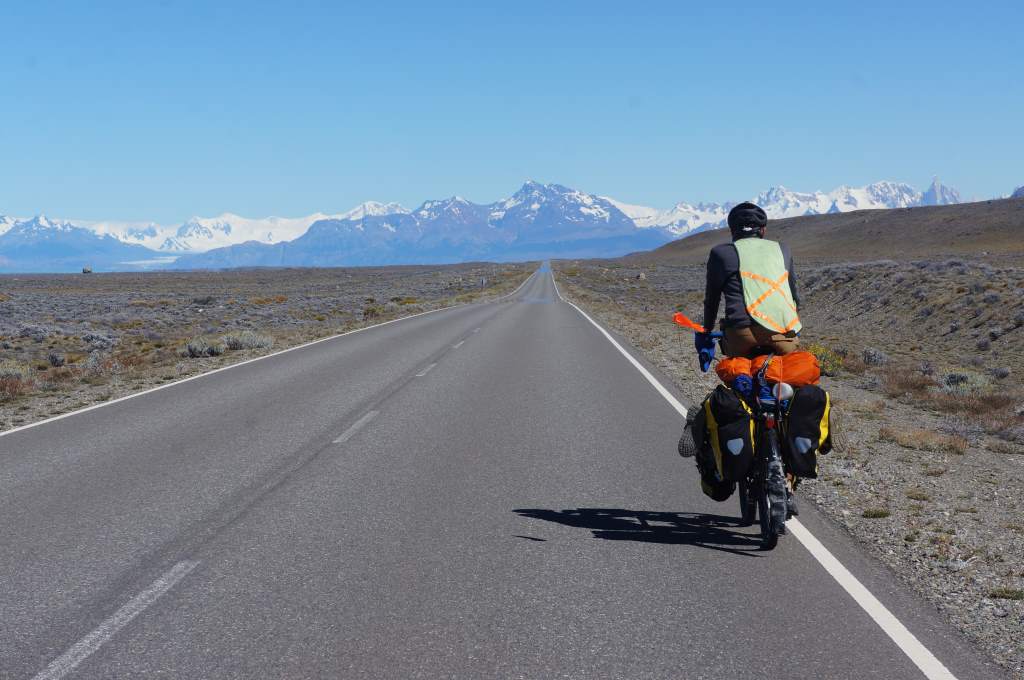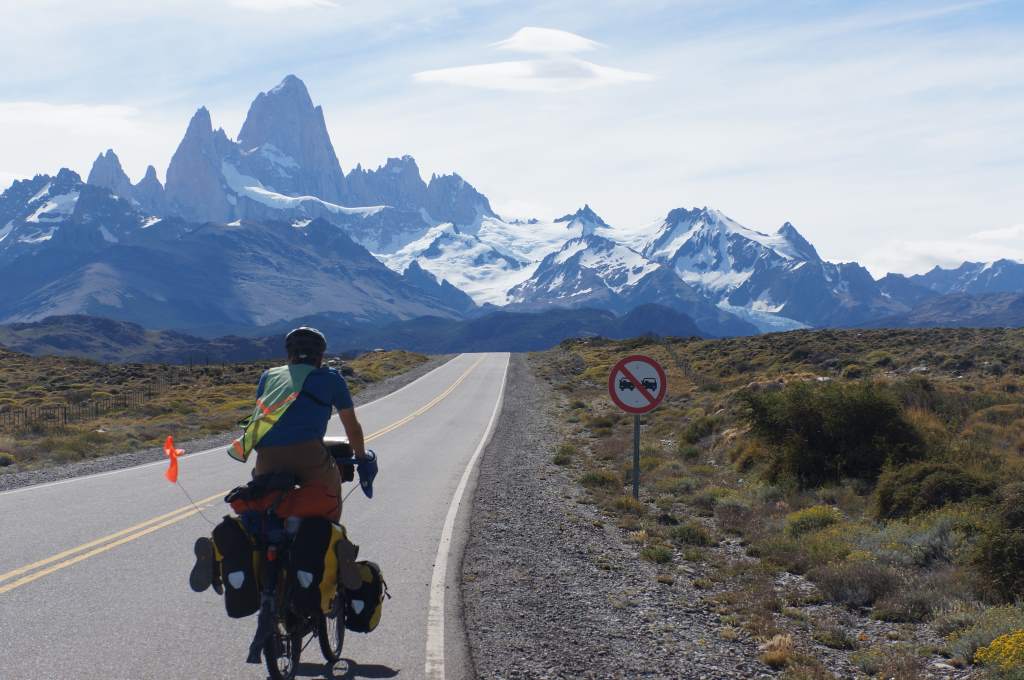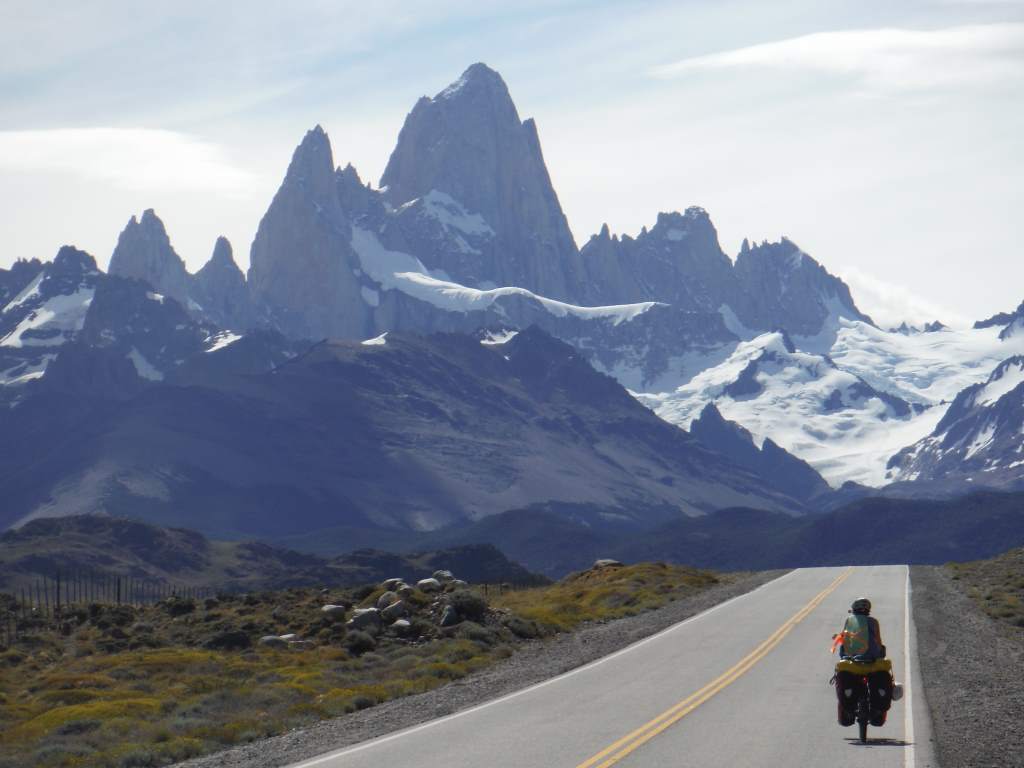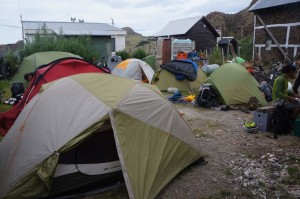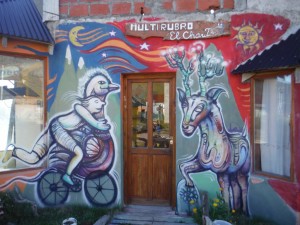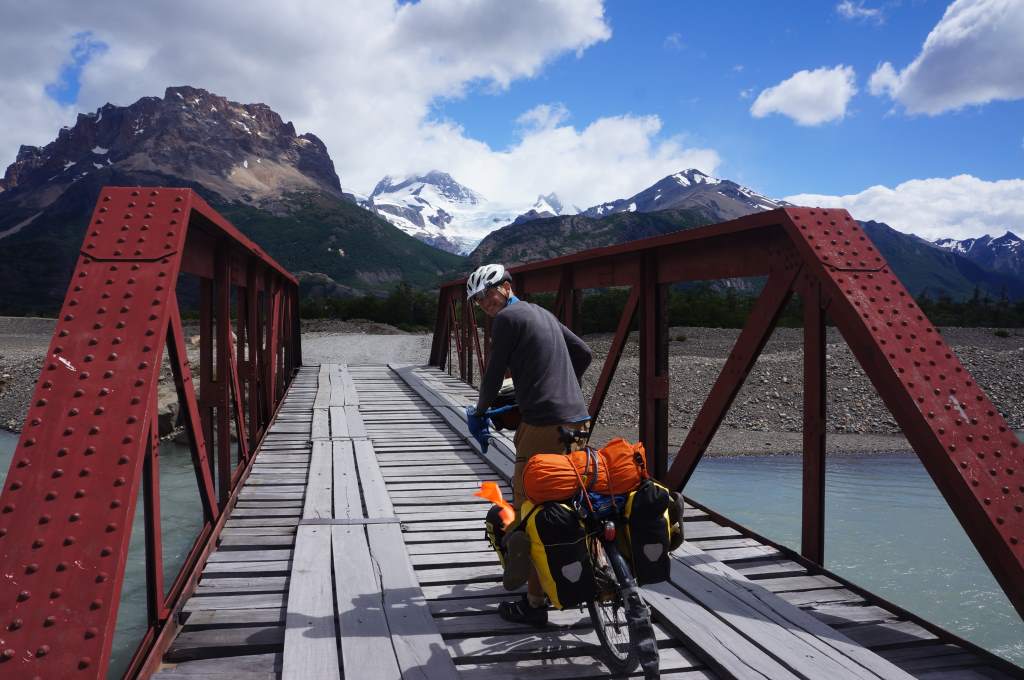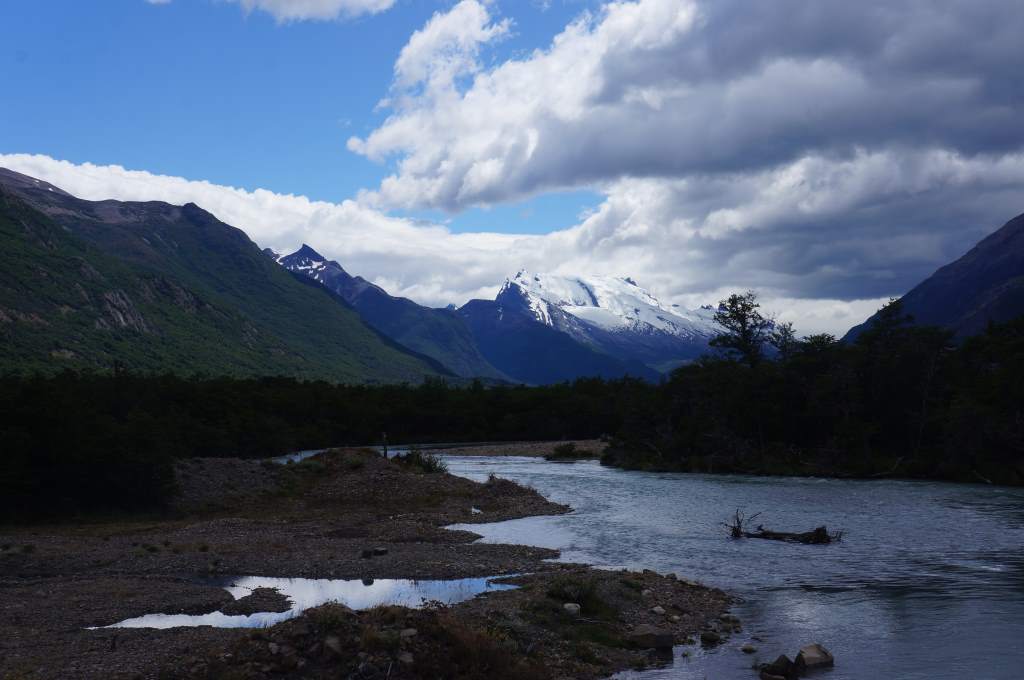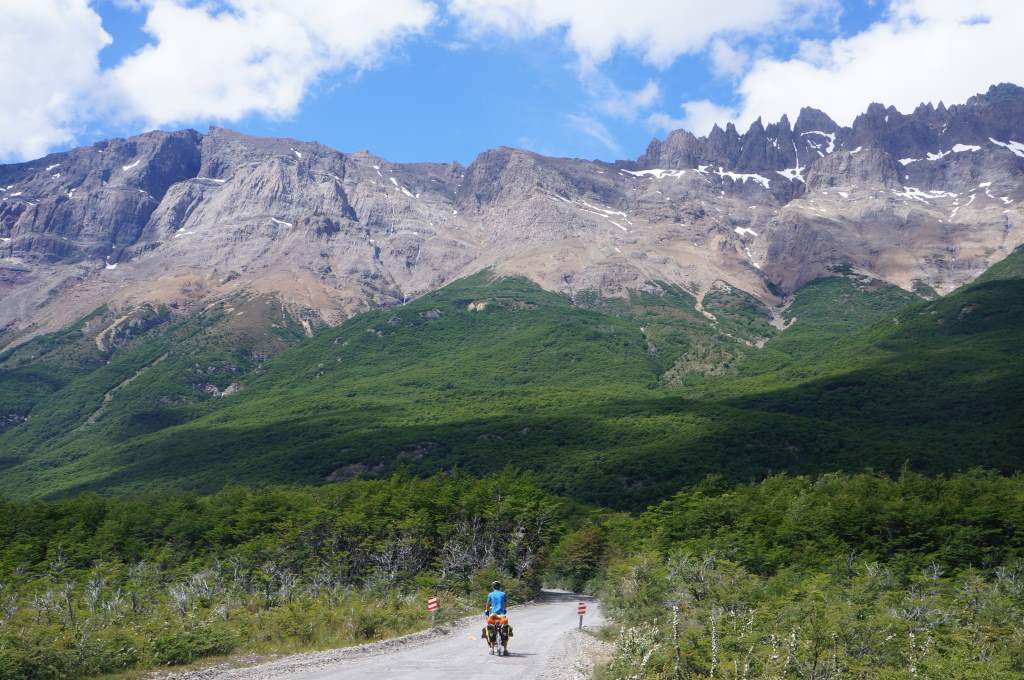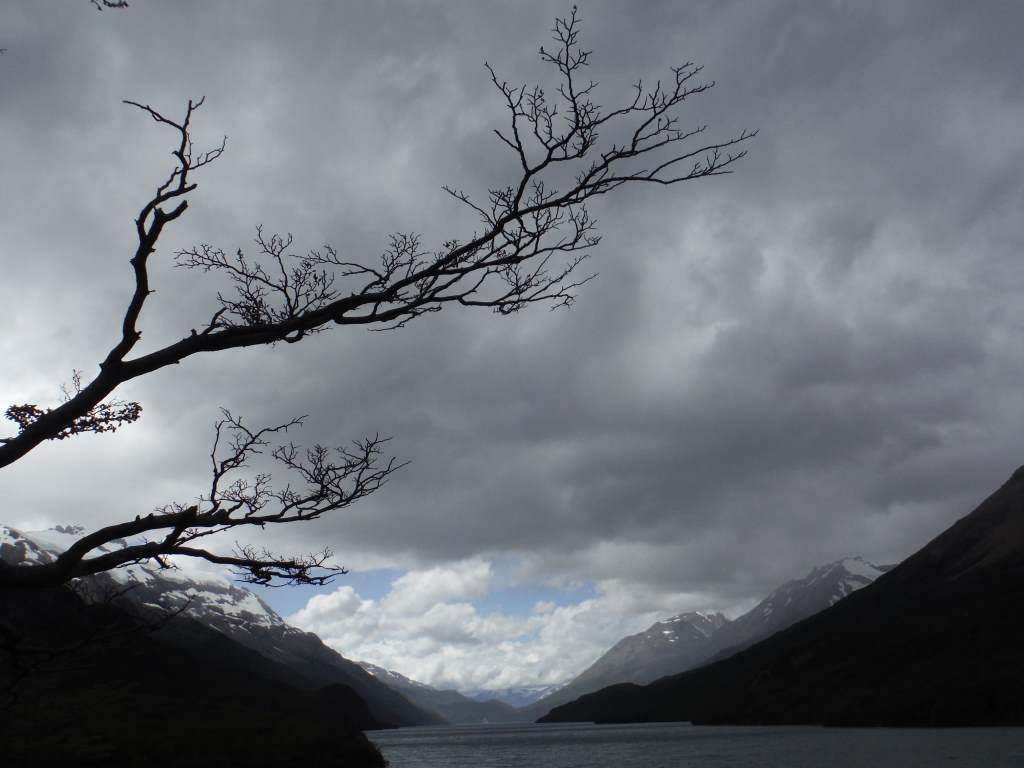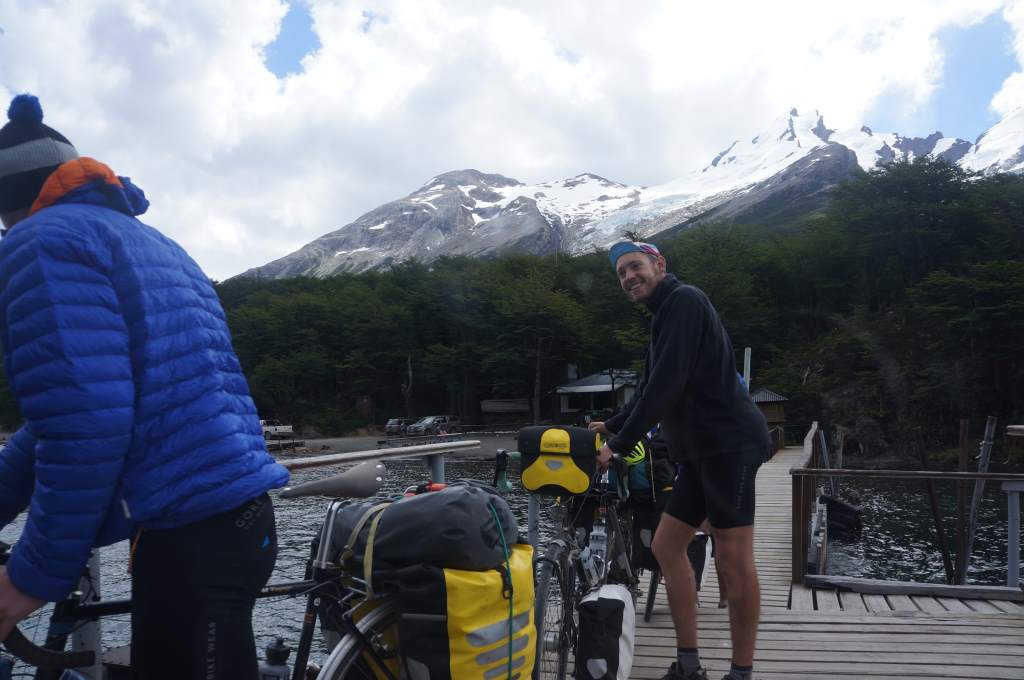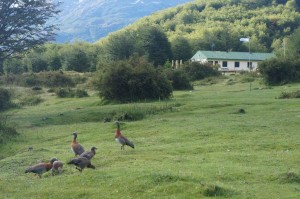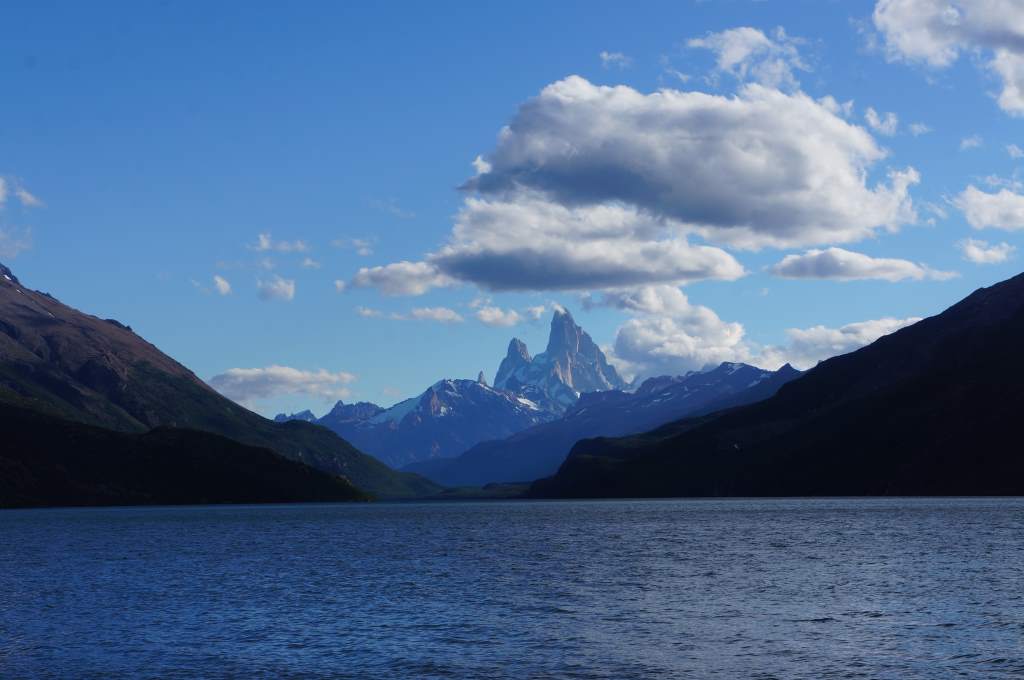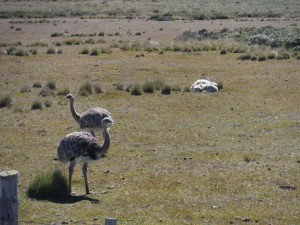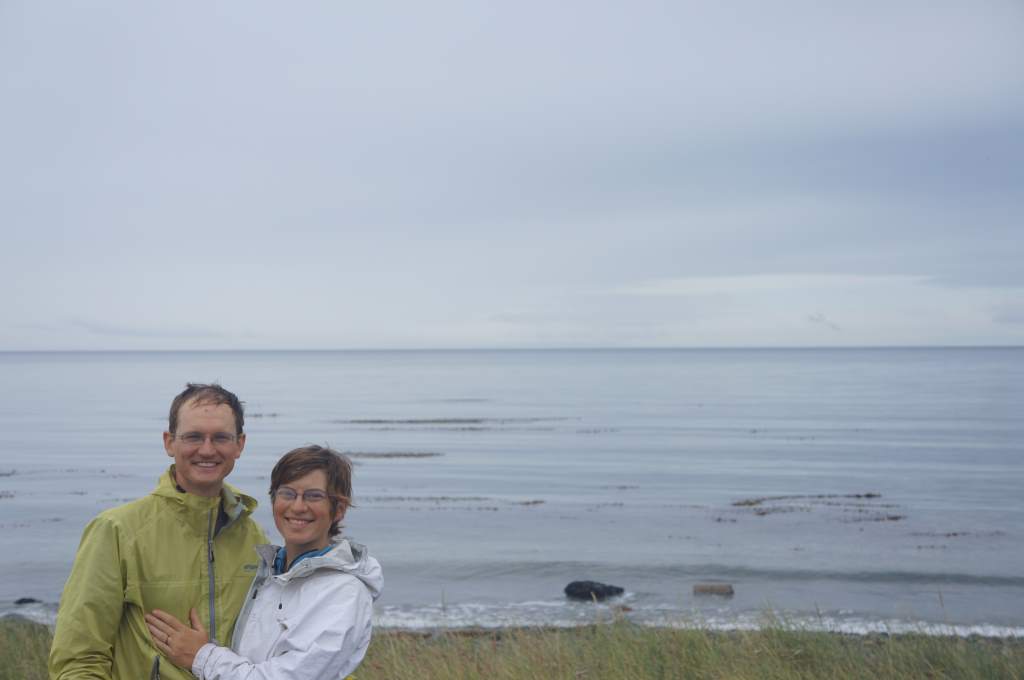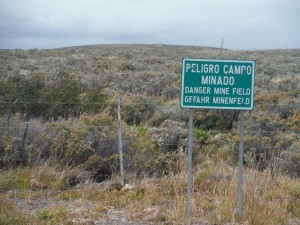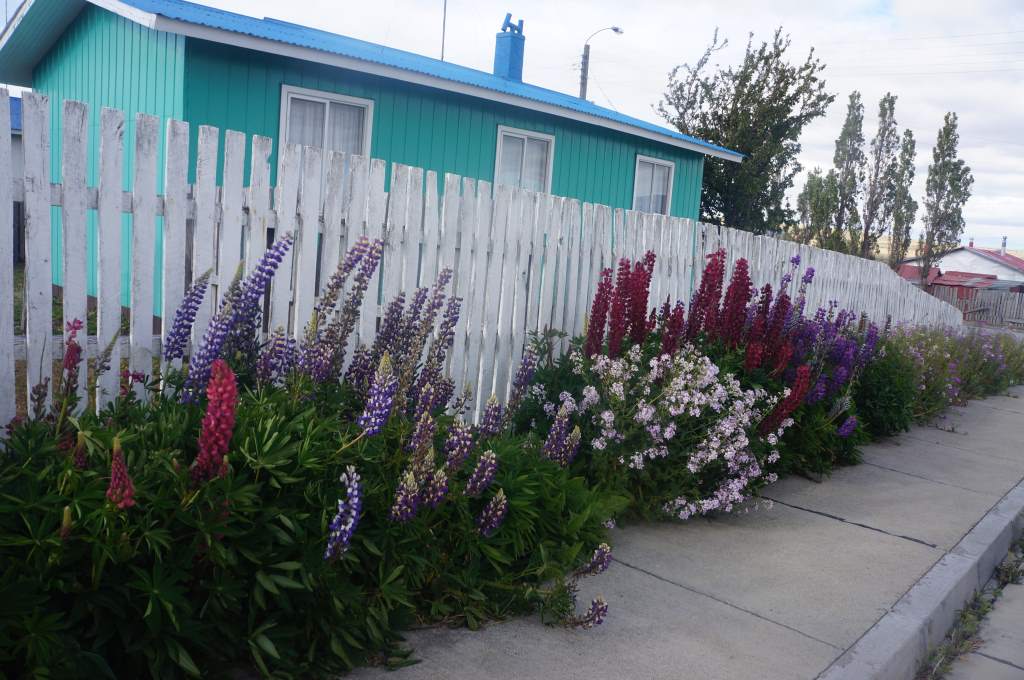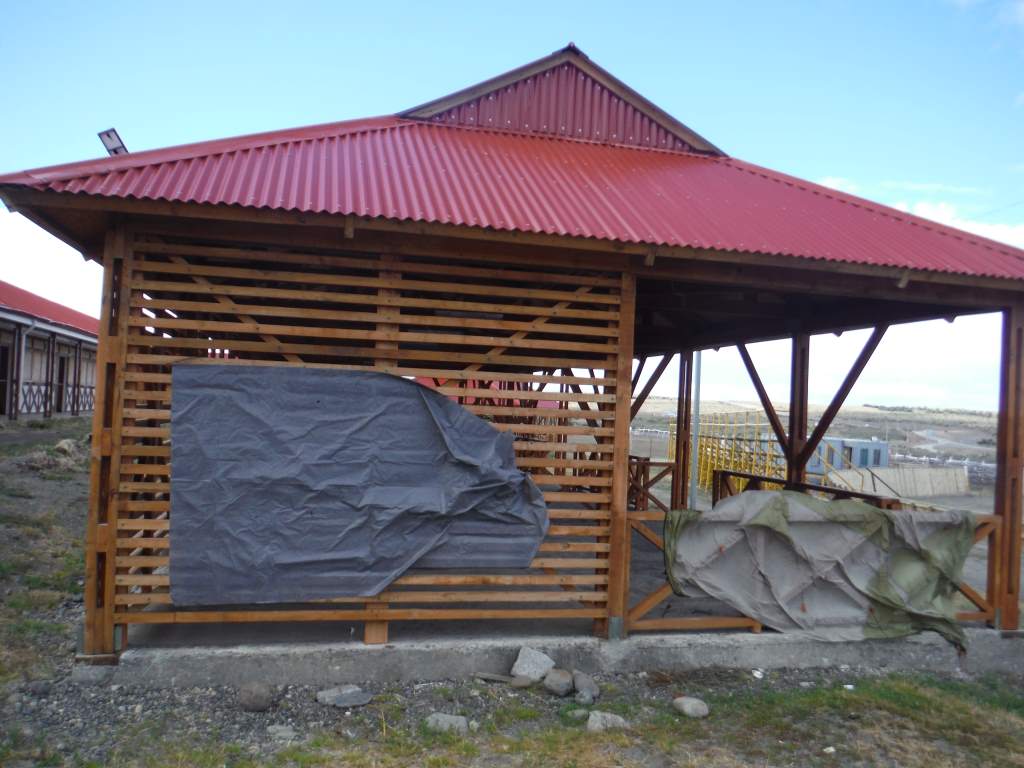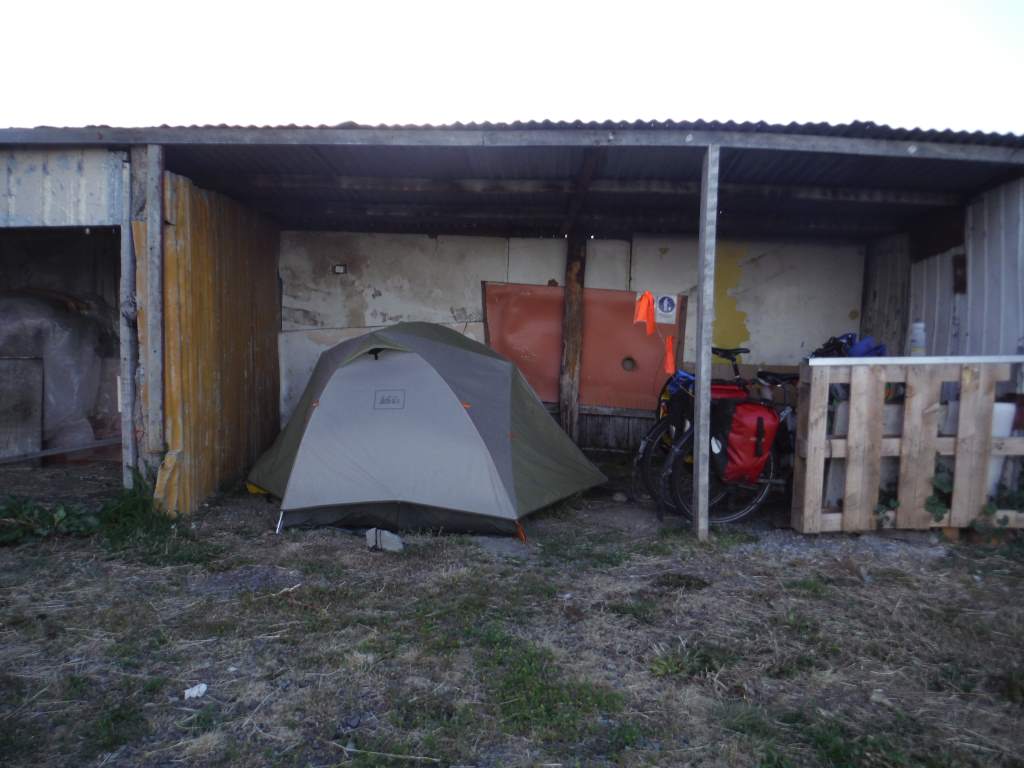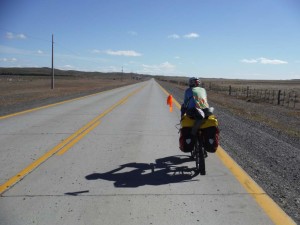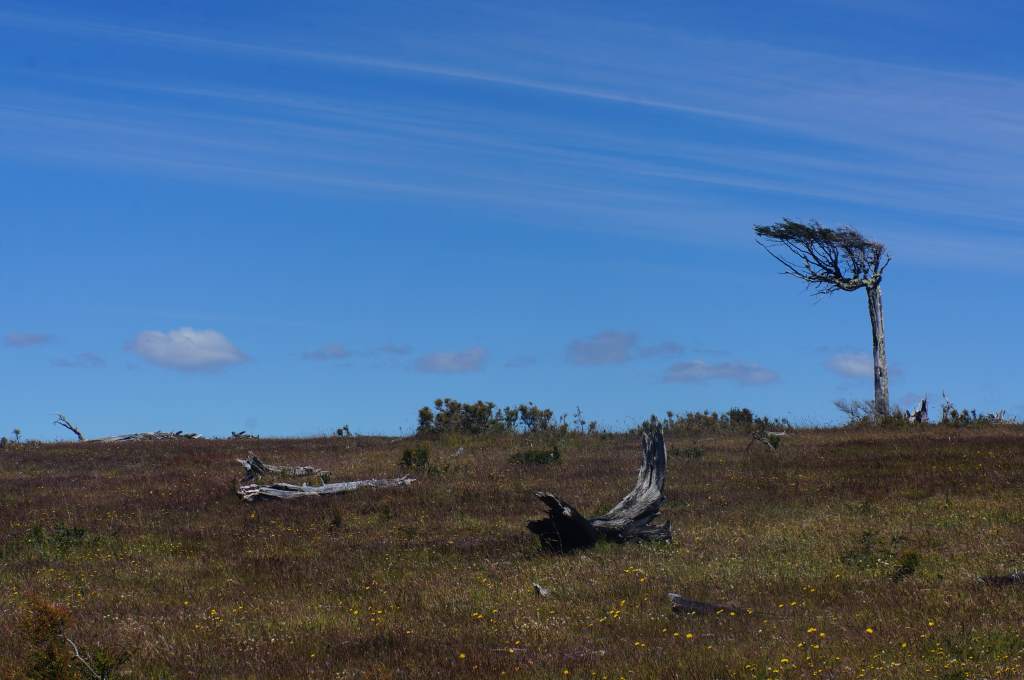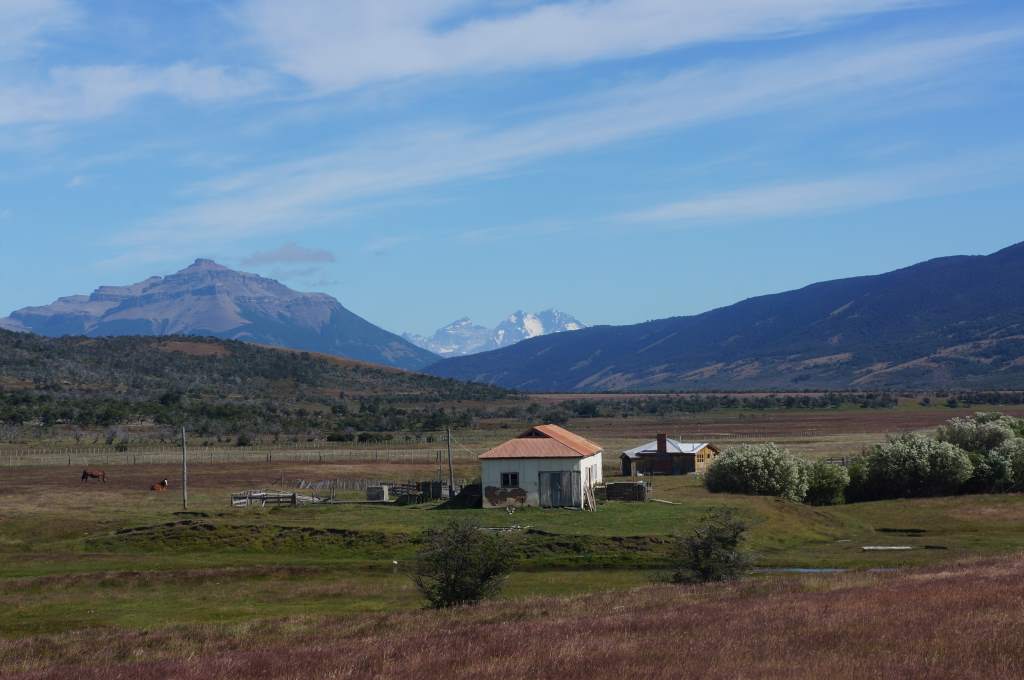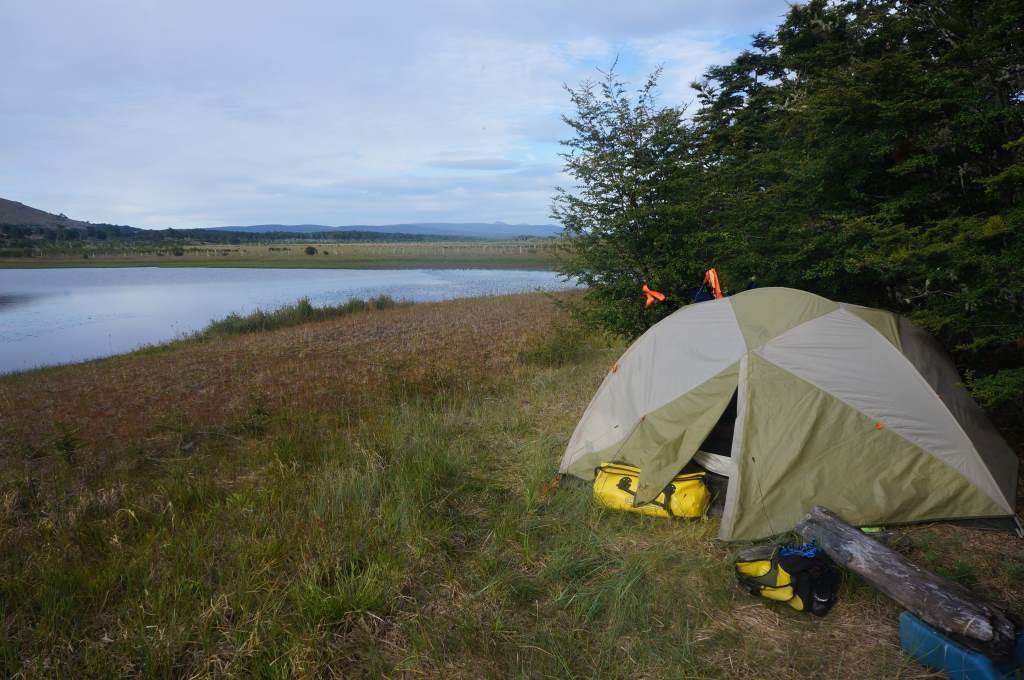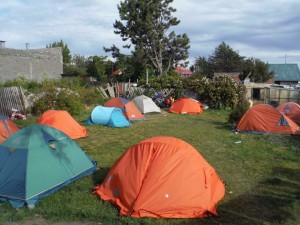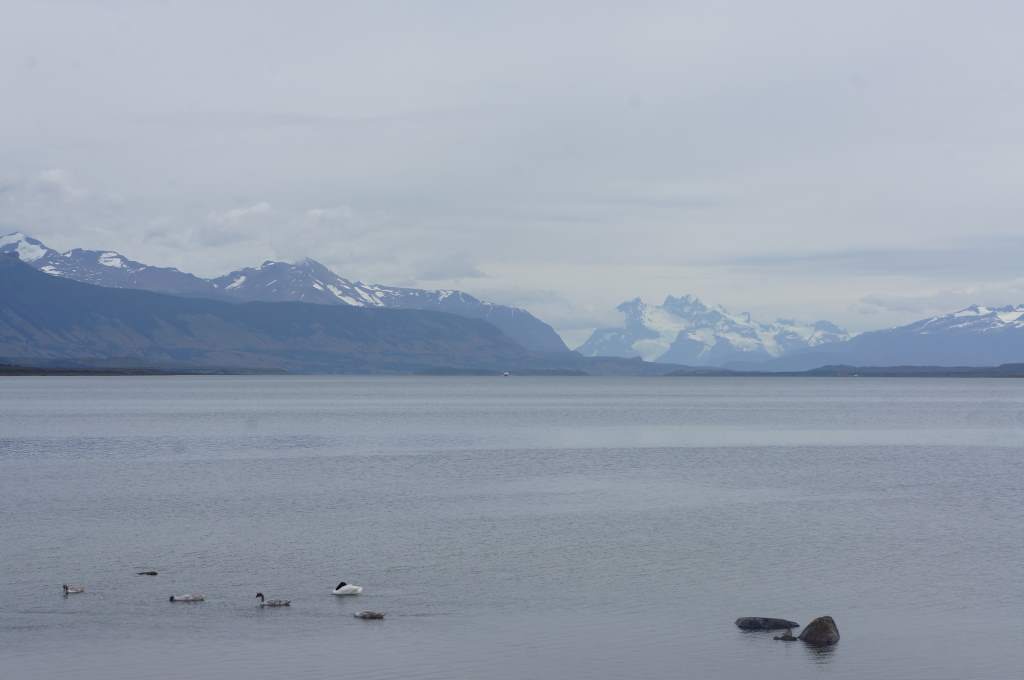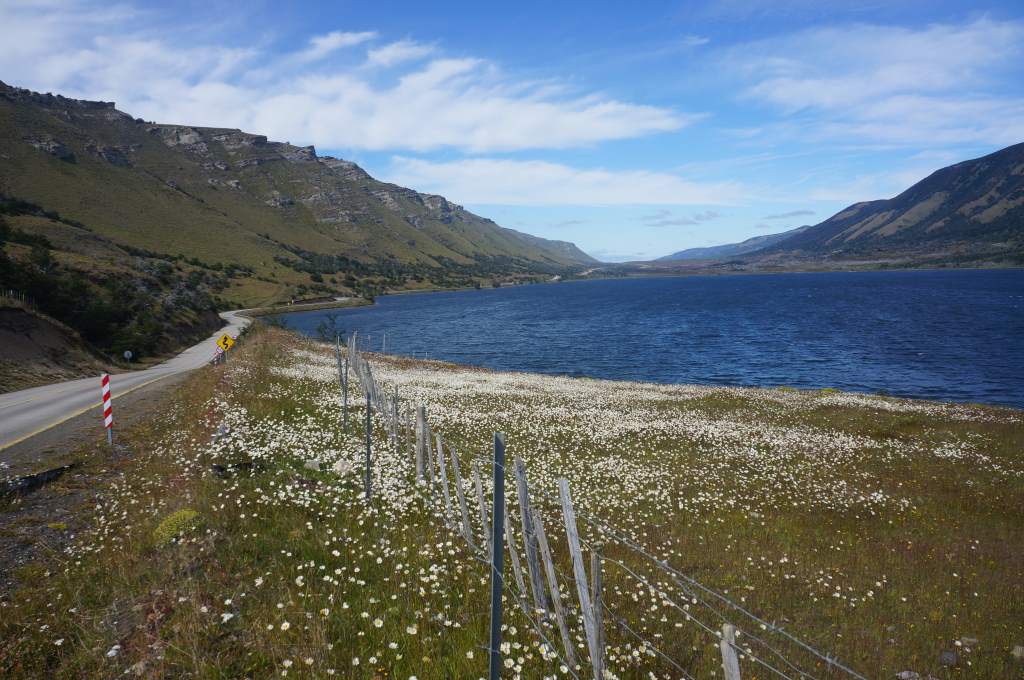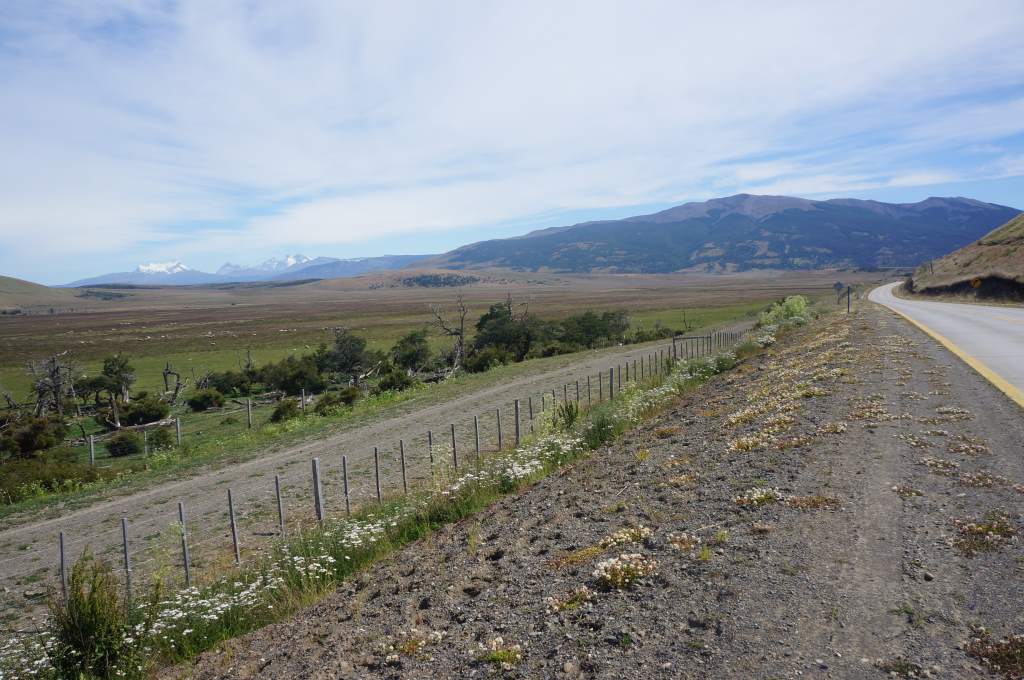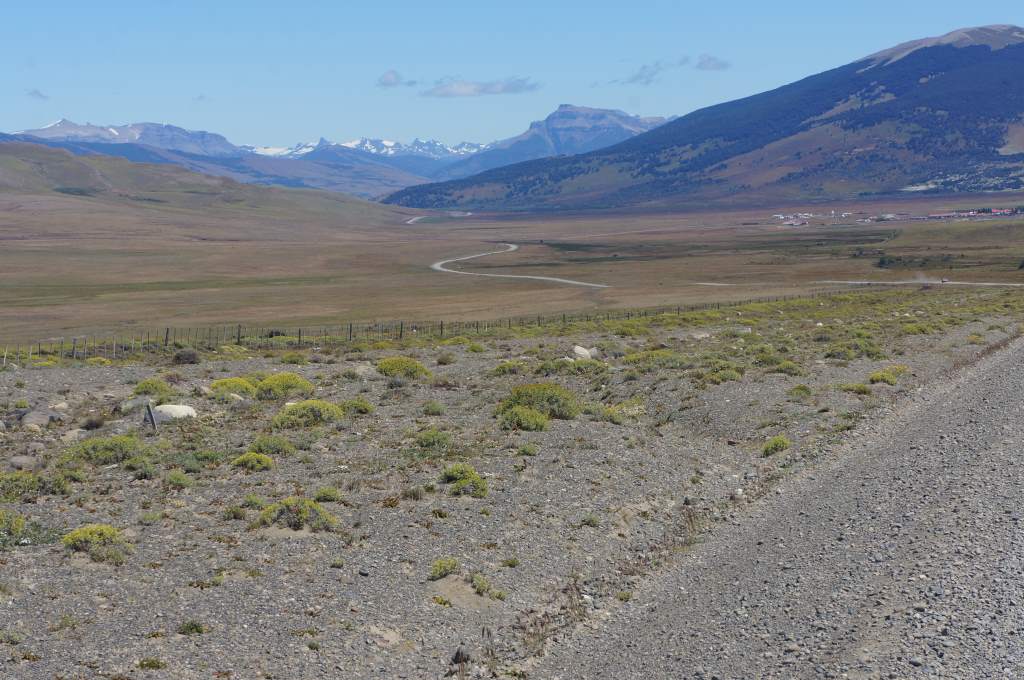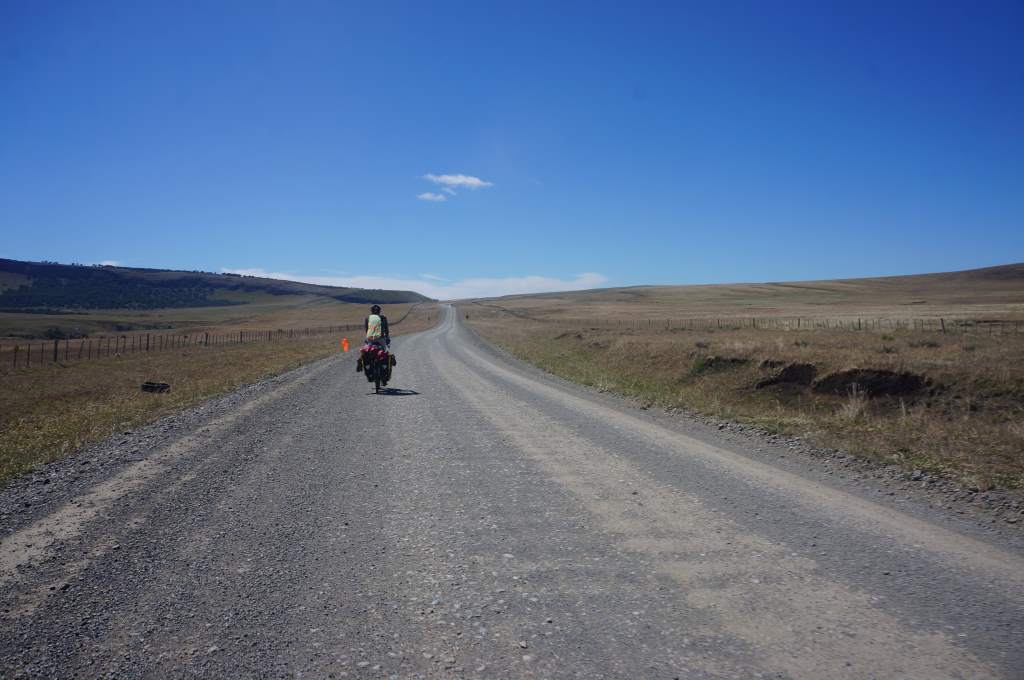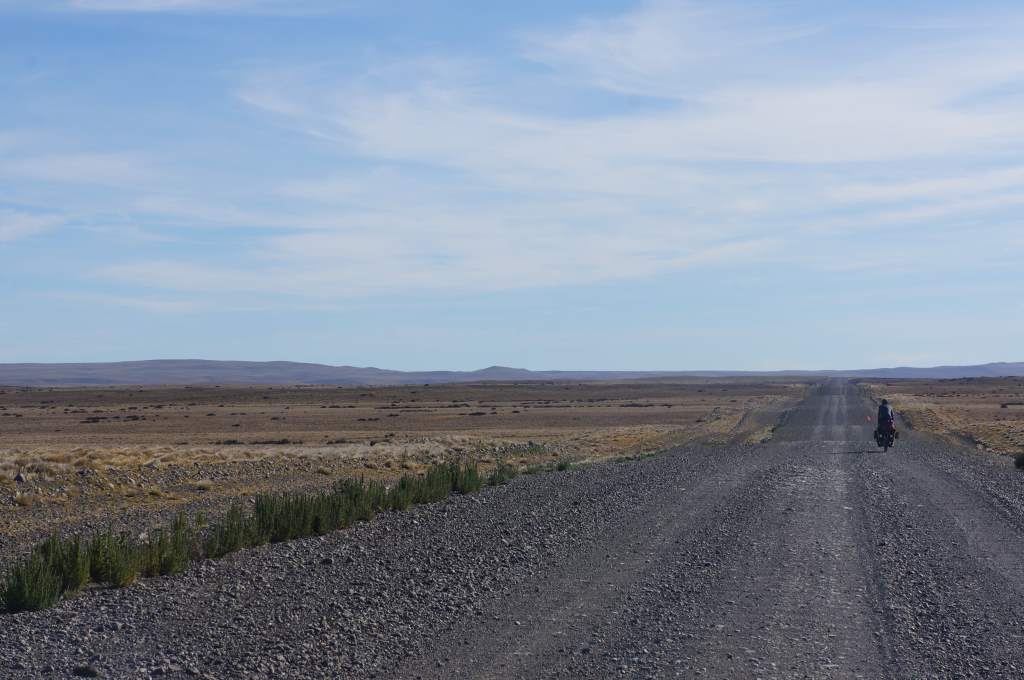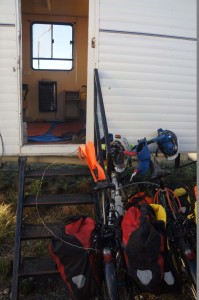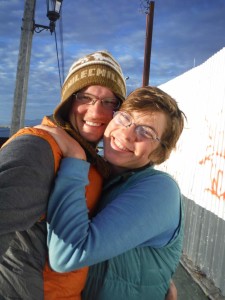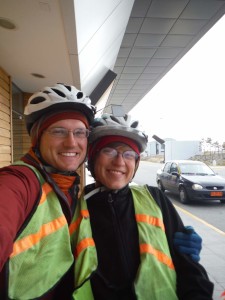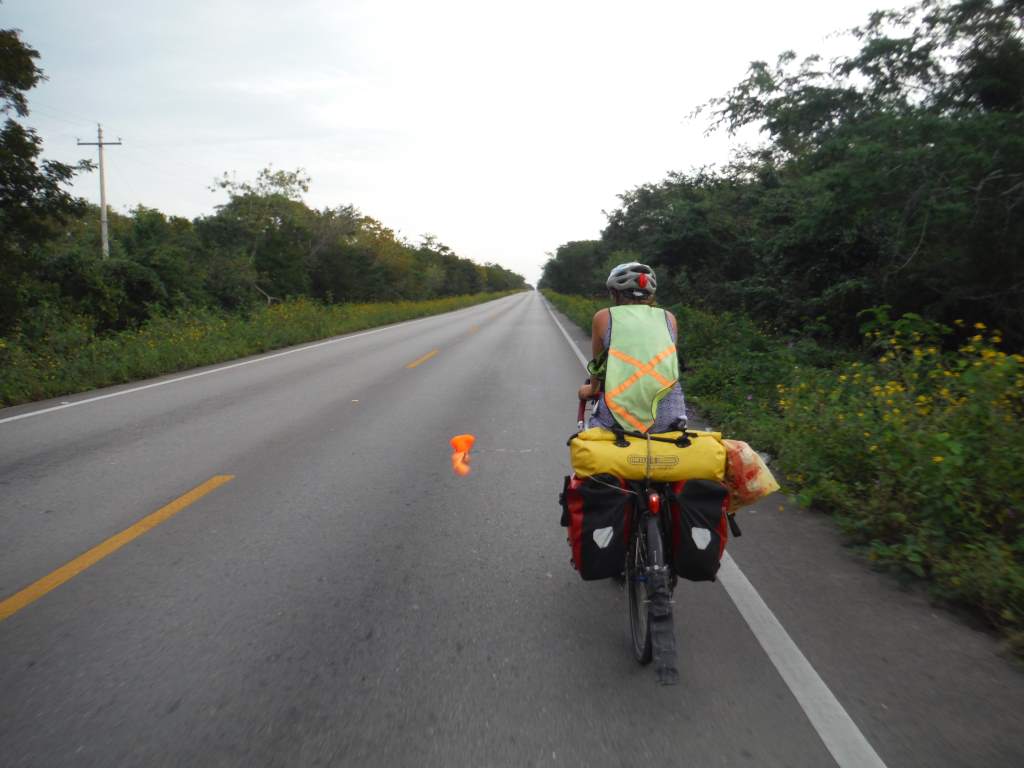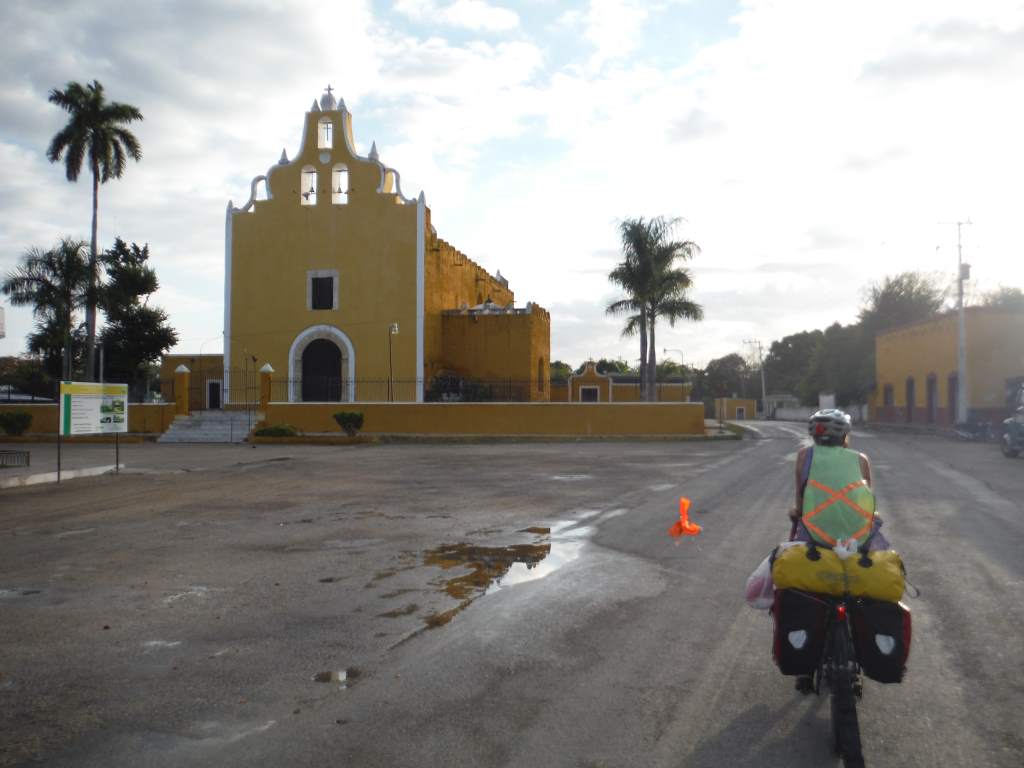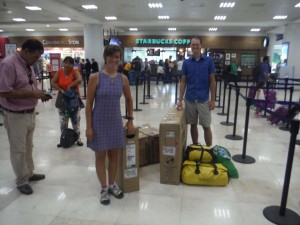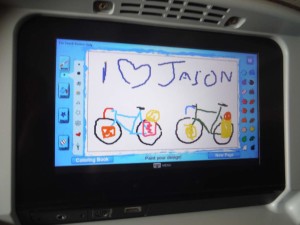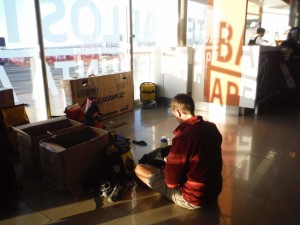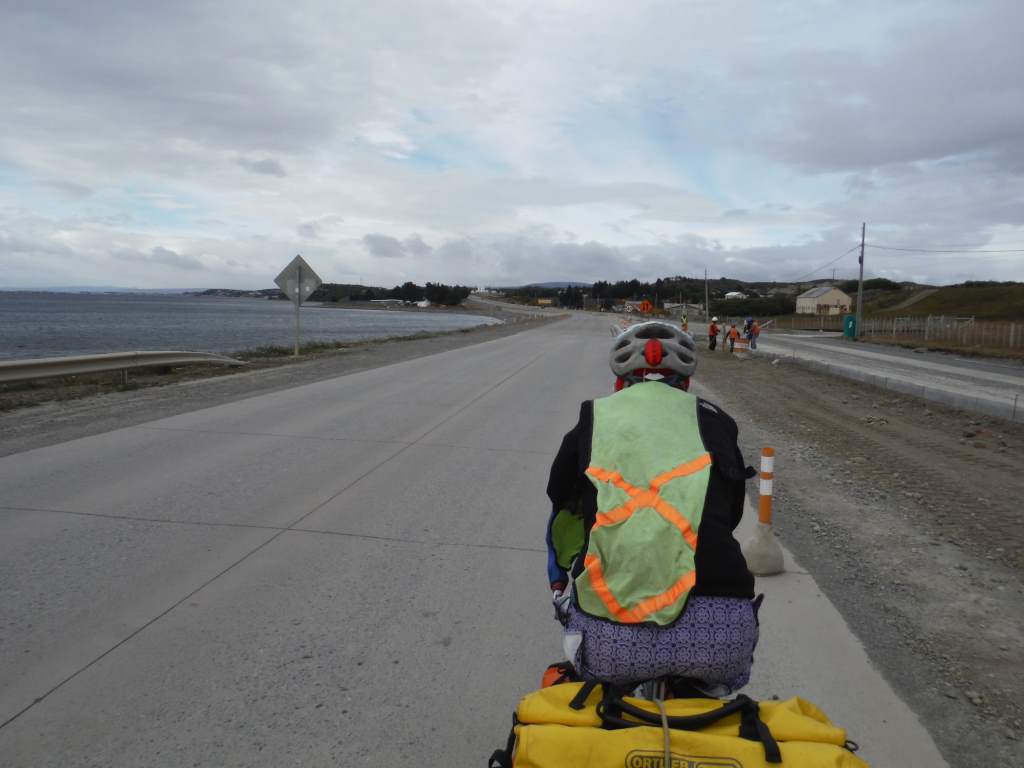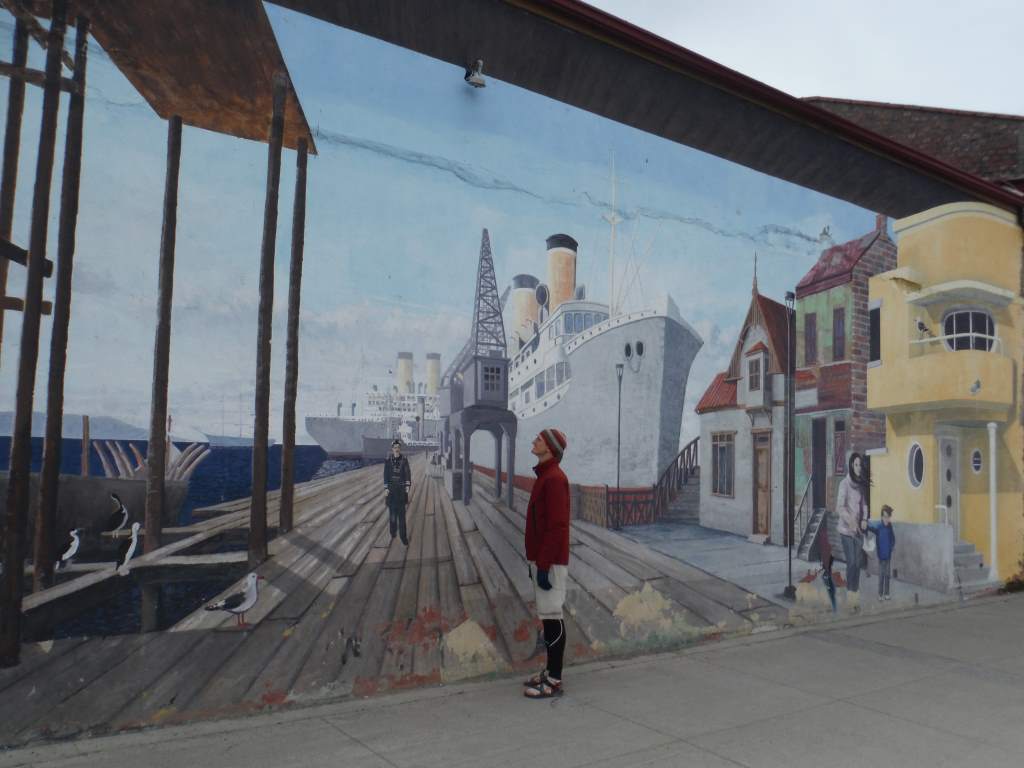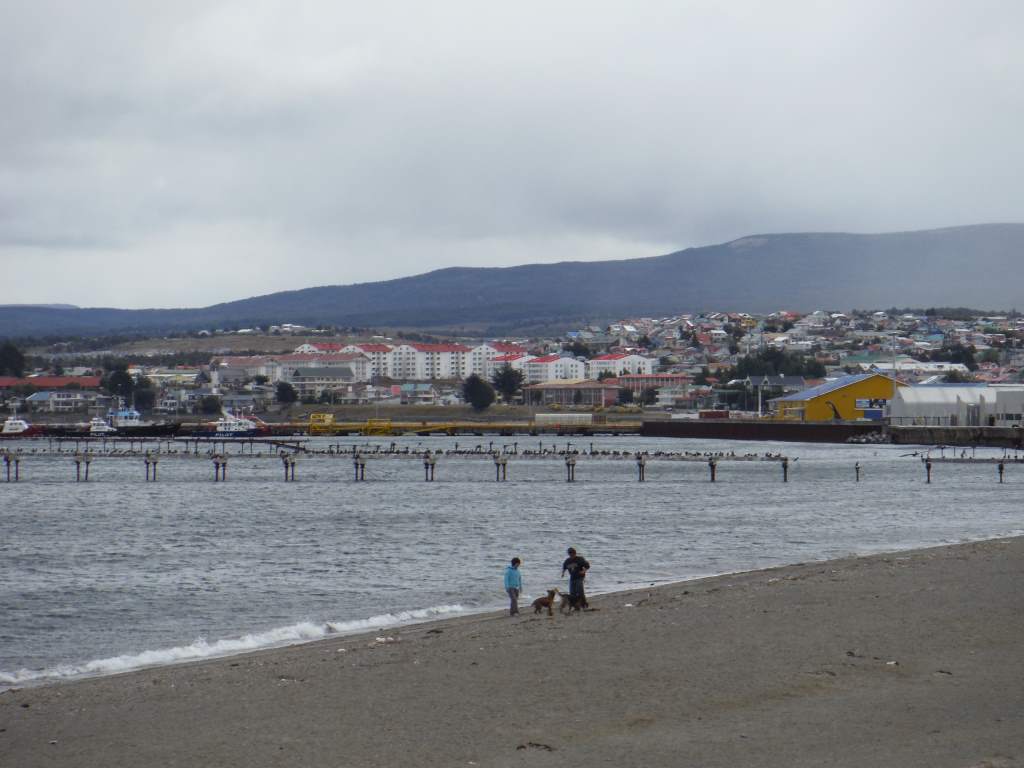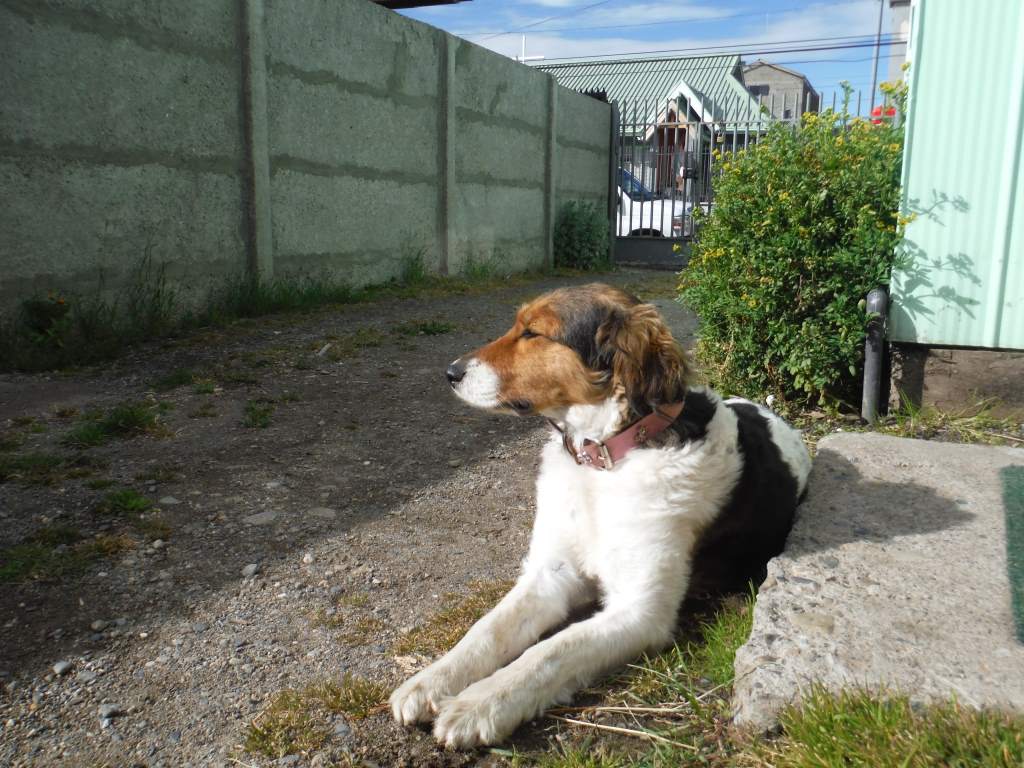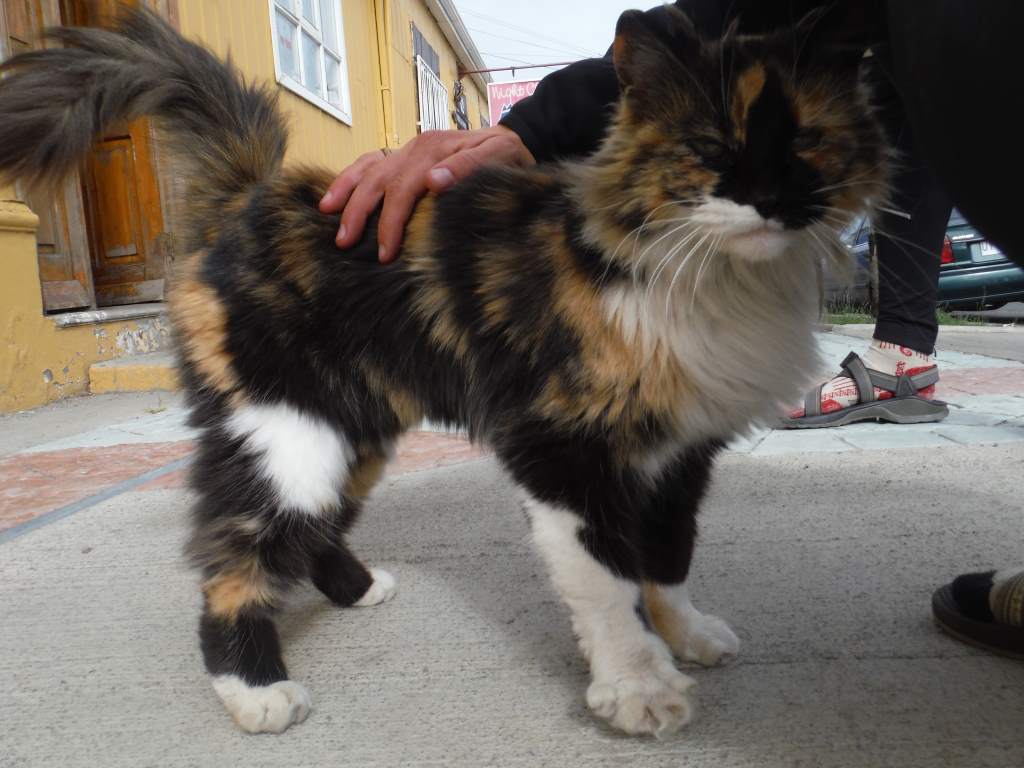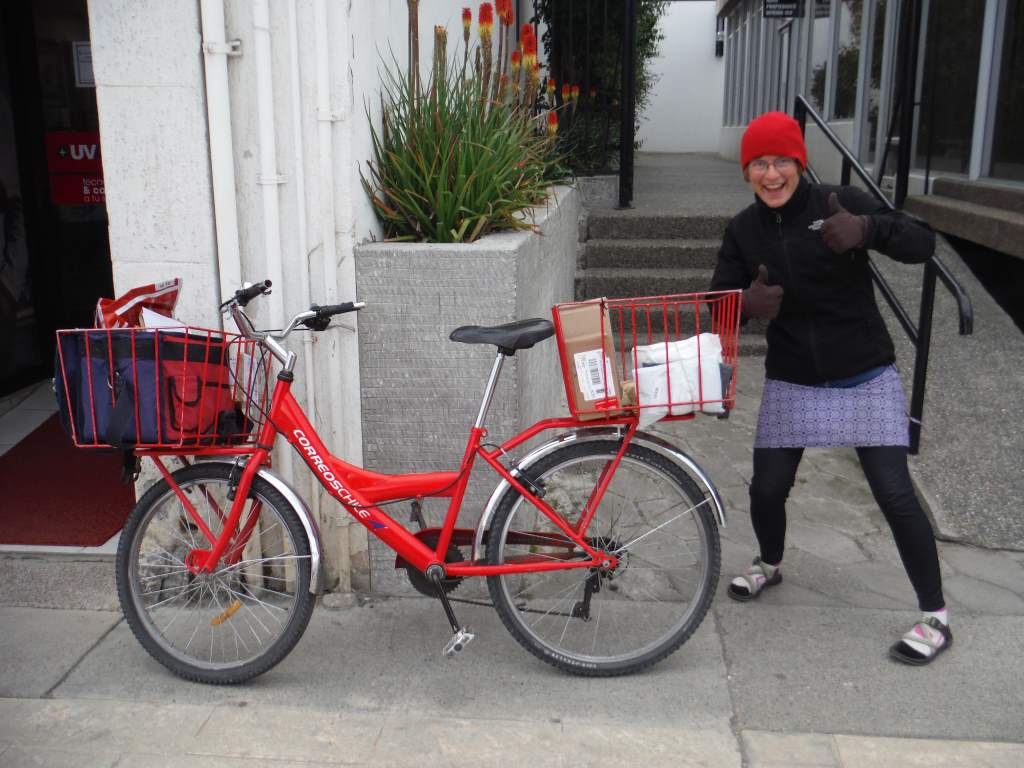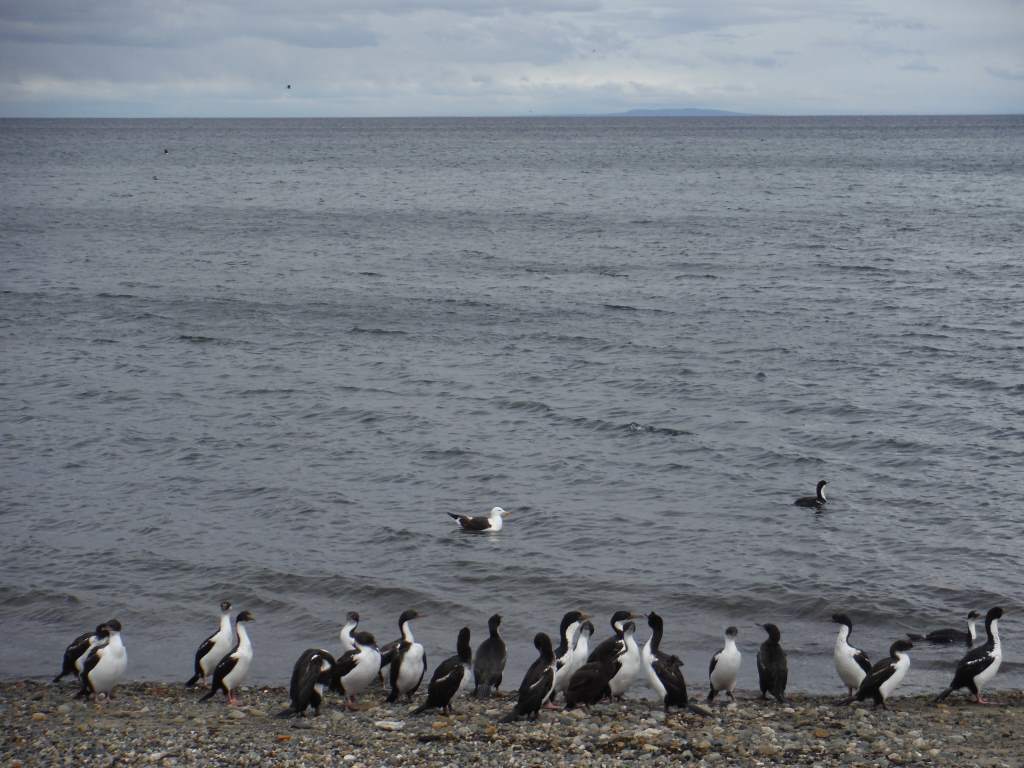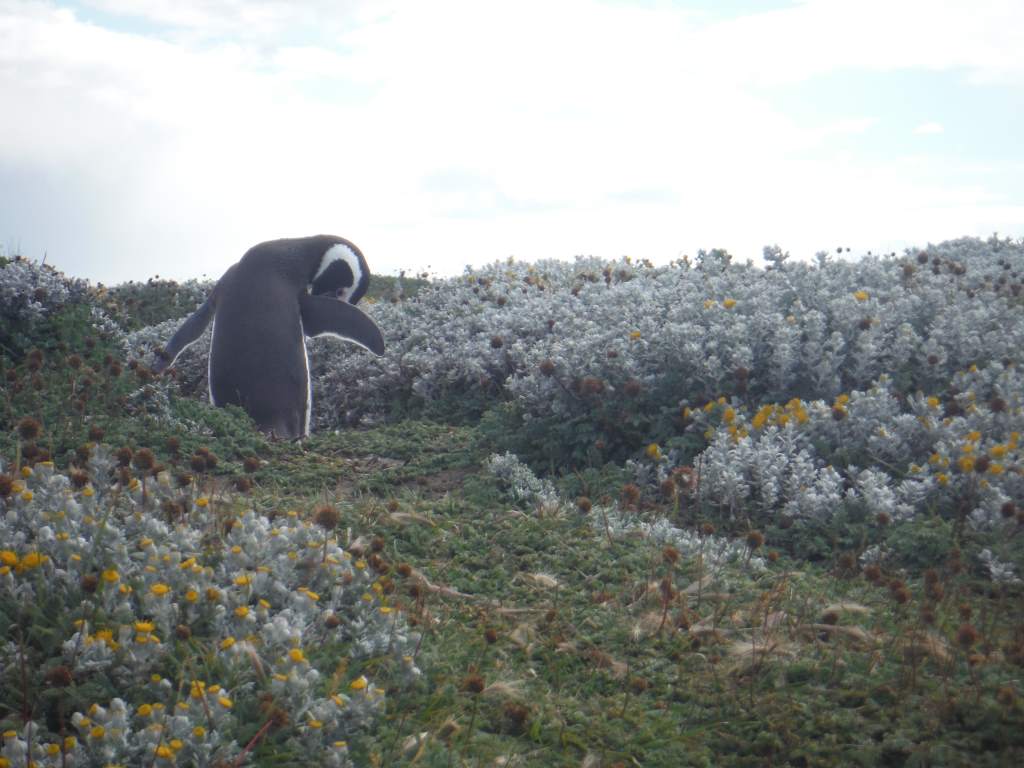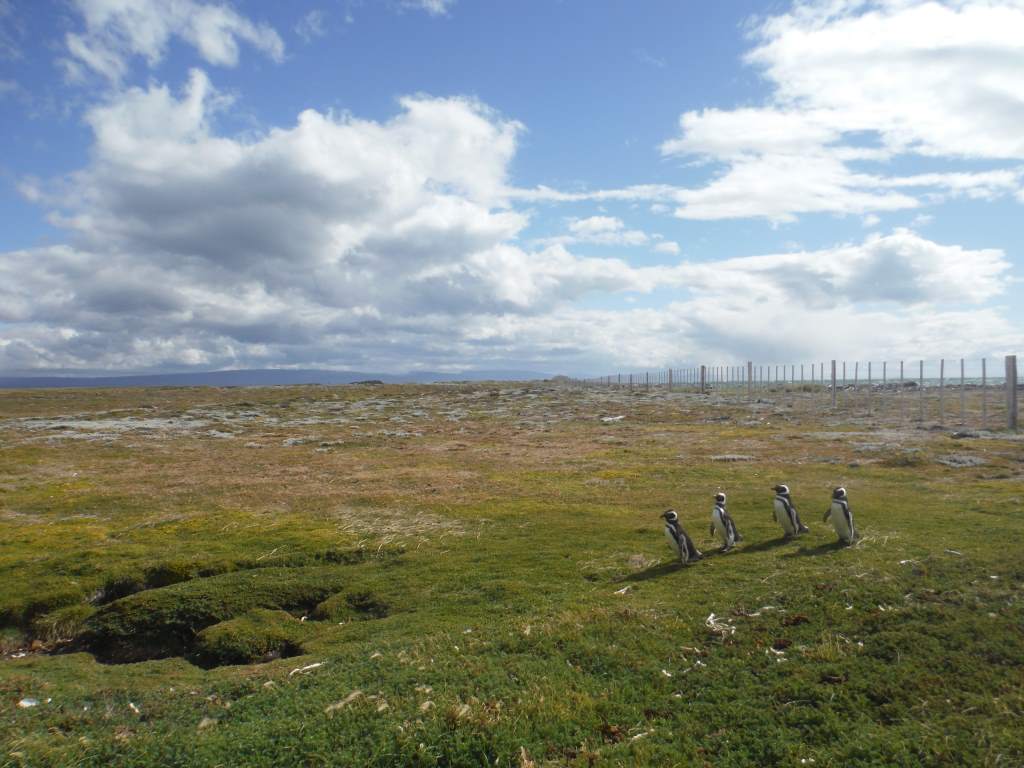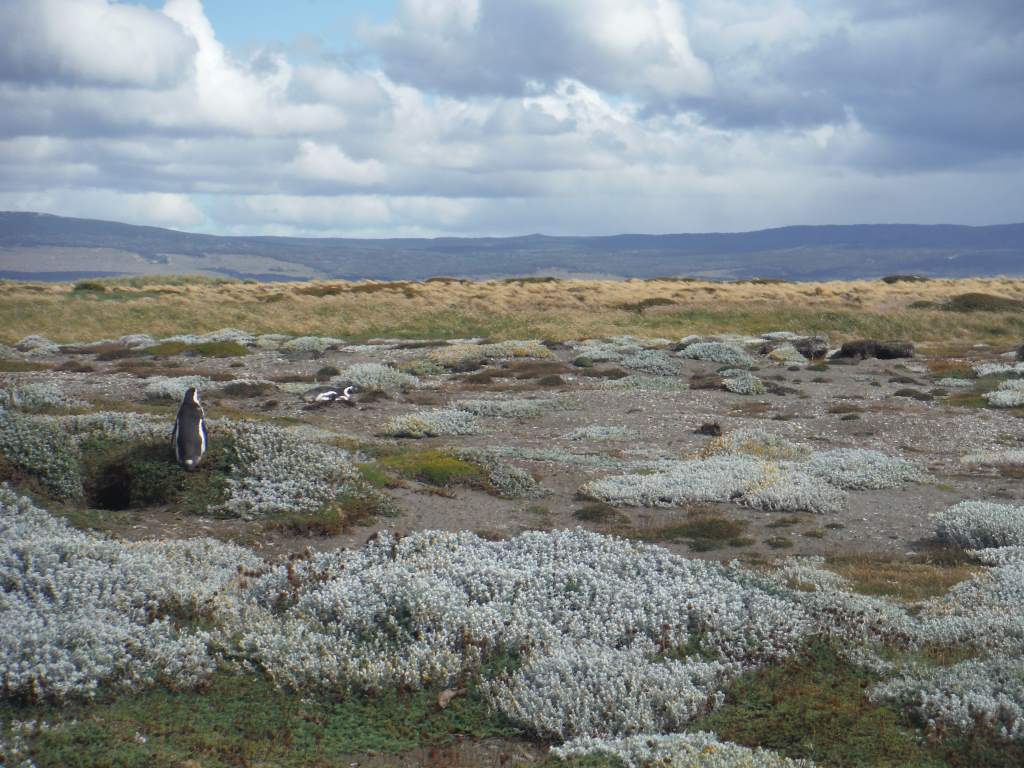This day was so incredible, that we’re dedicating an entire blog post to it. You see, there is a little-known border crossing between Argentina and Chile that only hikers and cyclists can cross. It is a 22 km stretch that links two lakes and two countries. It is stunning and exhausting and epic. Although we were warned by a great many southbound cyclists of the ‘struggle-fest’ that awaited us, we actually loved this short section that required so much effort. We didn’t have a strict timeline, so we took our time and had fun.
The crossing is a mere 22 km (13 miles), but the first 6 km are on a narrow, steep hiking trail and the rest are on a rough dirt track. Those first 6km took us a total of 5 hours! At first, the campground kitty kept pace with us as we pushed and tugged our bikes up the trail. It was super steep, but quite good as far as footing goes. I often had to remove my front panniers and rack pack and take everything up in two trips to manage the weight. In each of the three pictures below, try to find the kitty!
Sometimes the trail was like a bobsled chute, and our front panniers literally couldn’t fit through while on the bikes. Jason was smart and put his front panniers hanging on his top tube, so he almost never had to take two trips. At every stream crossing I took both bikes across so that Jason could keep his feet dry. Ah, the things we do for love…
We stopped for lunch about 3 km in, setting up in a shaded forest. We had several stream crossings, but sometime after lunch we had the worst stream crossing of all: the bog. The mud was super deep! It tried to suck my sandals off my feet and at times reached halfway to my knee. At one point I got stuck and the bike almost fell in. Luckily, Jason was there and he saved both of us. About an hour after lunch Jason got stuck on a particularly hard section and let his bike fall down. He just left it on the ground, in the path, and declared that it was break time.
After 5 hours we made it to the border at the top of the pass. Woohoo! We took the celebratory photos and ate the last of a peanut dessert we had bought a few days back. Immediately the rough trail became a rough, but very rideable, track. It felt so good to ride again! There were a few steep uphills, but we mostly got to coast downhill. We passed a (very) primitive landing strip, cows, and horses.
Sometimes the road was very steep downhill, and loose too, so we had to ride with one foot bouncing along on the dirt. Sometimes we had to walk. Soon enough we turned a corner to see the lovely Lake O’Higgins stretching out below us.
At about 4 o’clock we reached the border control shack, and got through with no problems. We even got to keep our veggies! I think the agent just forgot to ask us about them.
By 4:15 we were at the ferry dock, and we decided to catch the boat. While we waited we cooked up a pot of rice, veggies, and tuna to eat on the boat. When the craft actually arrived we were nervous that there wouldn’t be room or that they wouldn’t take our tickets that were technically for tomorrow. No worries though, they just decided that it was ok to have more people than the technical capacity, and they told us we had to sit in the kitchen.
We did spend a bit of time on deck enjoying the scenery before retreating to the warm and comfortable kitchen for a nap all the way to the other side of the lake.
Once offloaded, we dealt with the expected chaos of nine cyclists sorting out their bikes and gear after a ferry ride. We took the obligatory photos at the ‘End of the Carretera Austral’ sign, and rode towards town. Although we had originally planned to camp in town, we stopped halfway there to camp for free next to some abandoned boats. It was nice and quiet there, although we were actually ravenous again.
We ate oatmeal for second dinner, and finally went to bed. It started to rain as we ate, and continued through the night. The next morning we made the short ride into town. You’ll have to wait for the next update to hear more about this fantastic dirt road we’re spending the next three weeks on!
